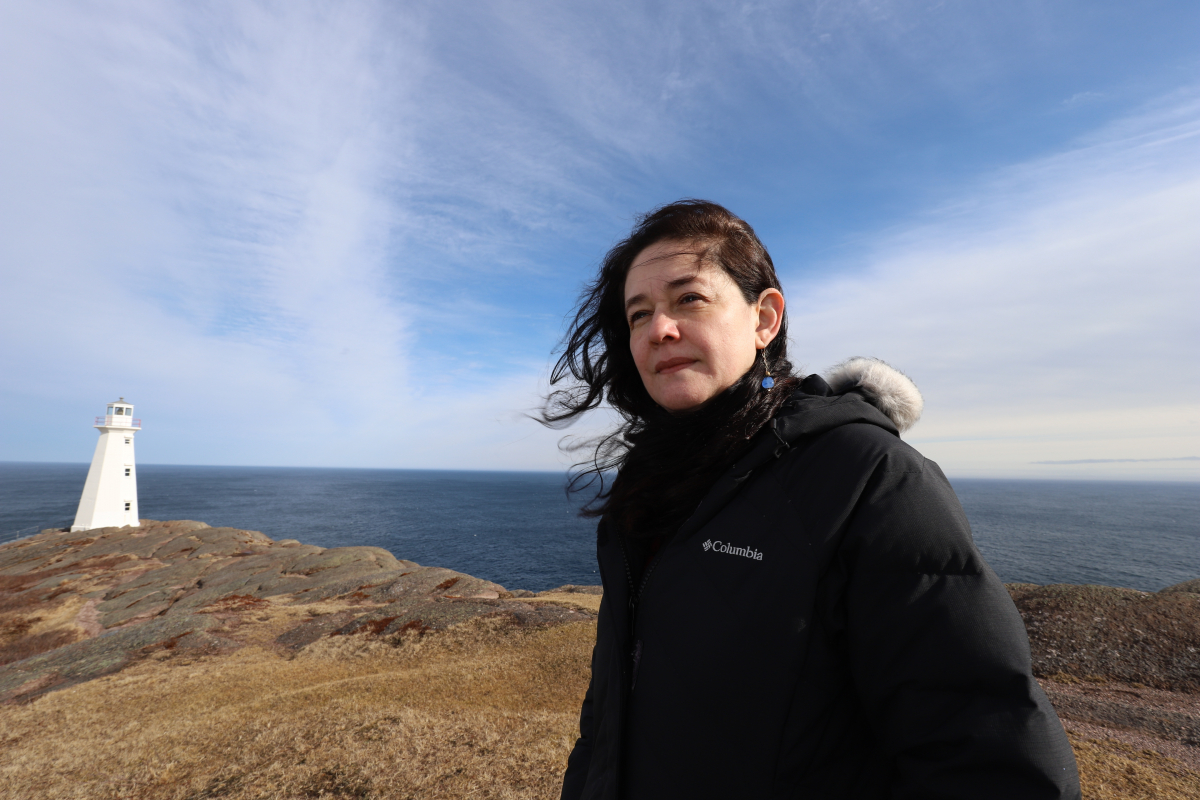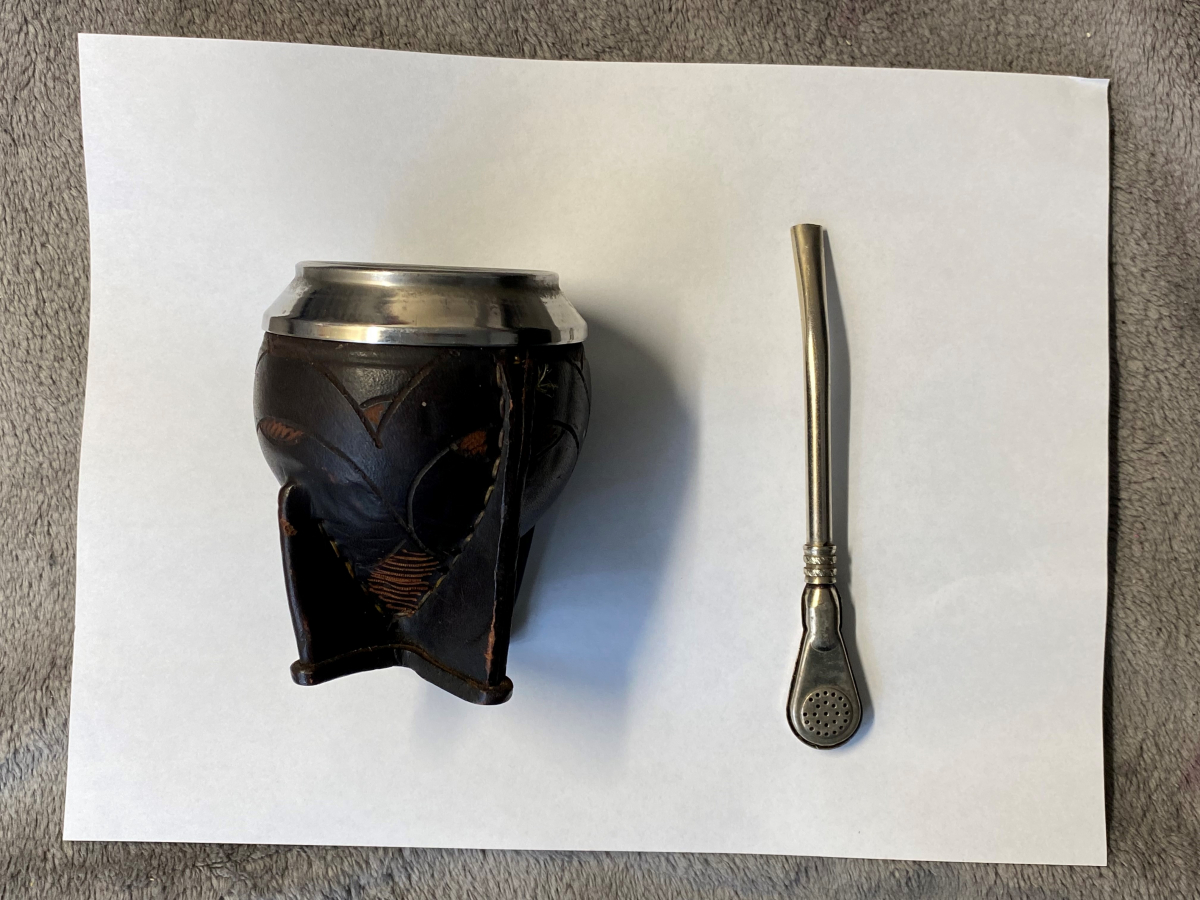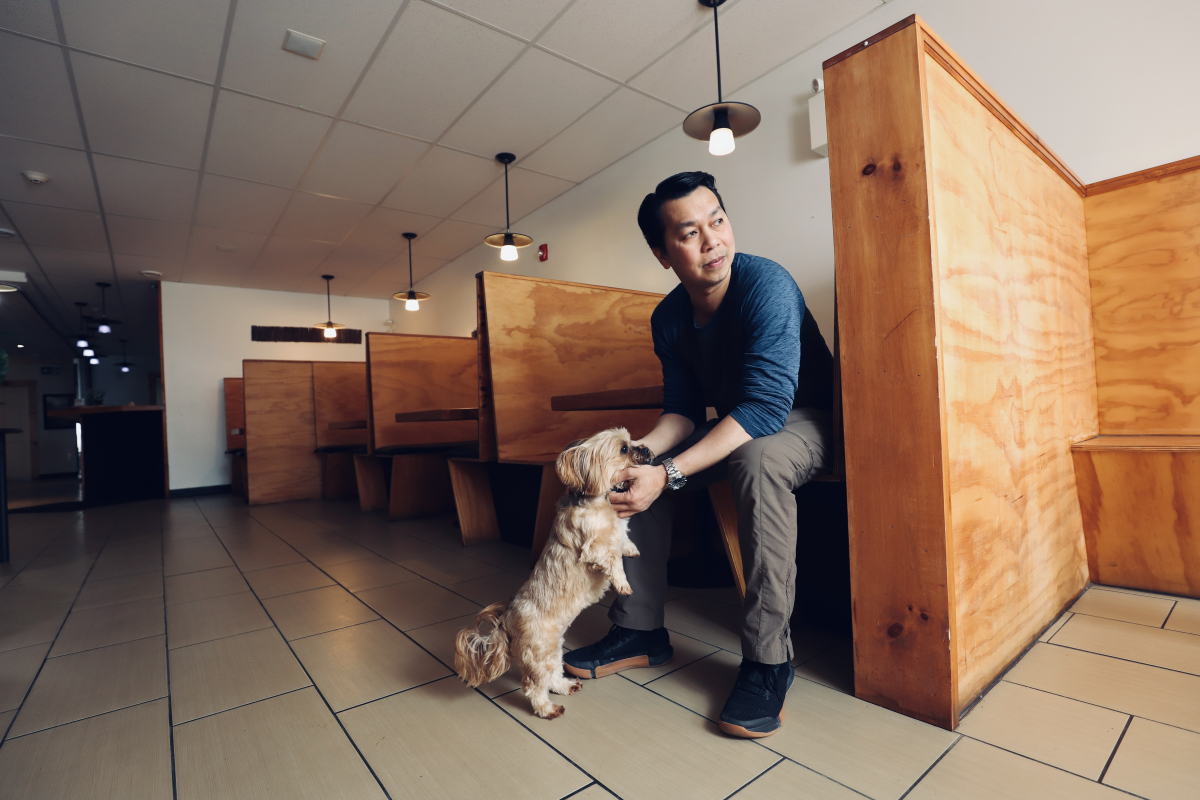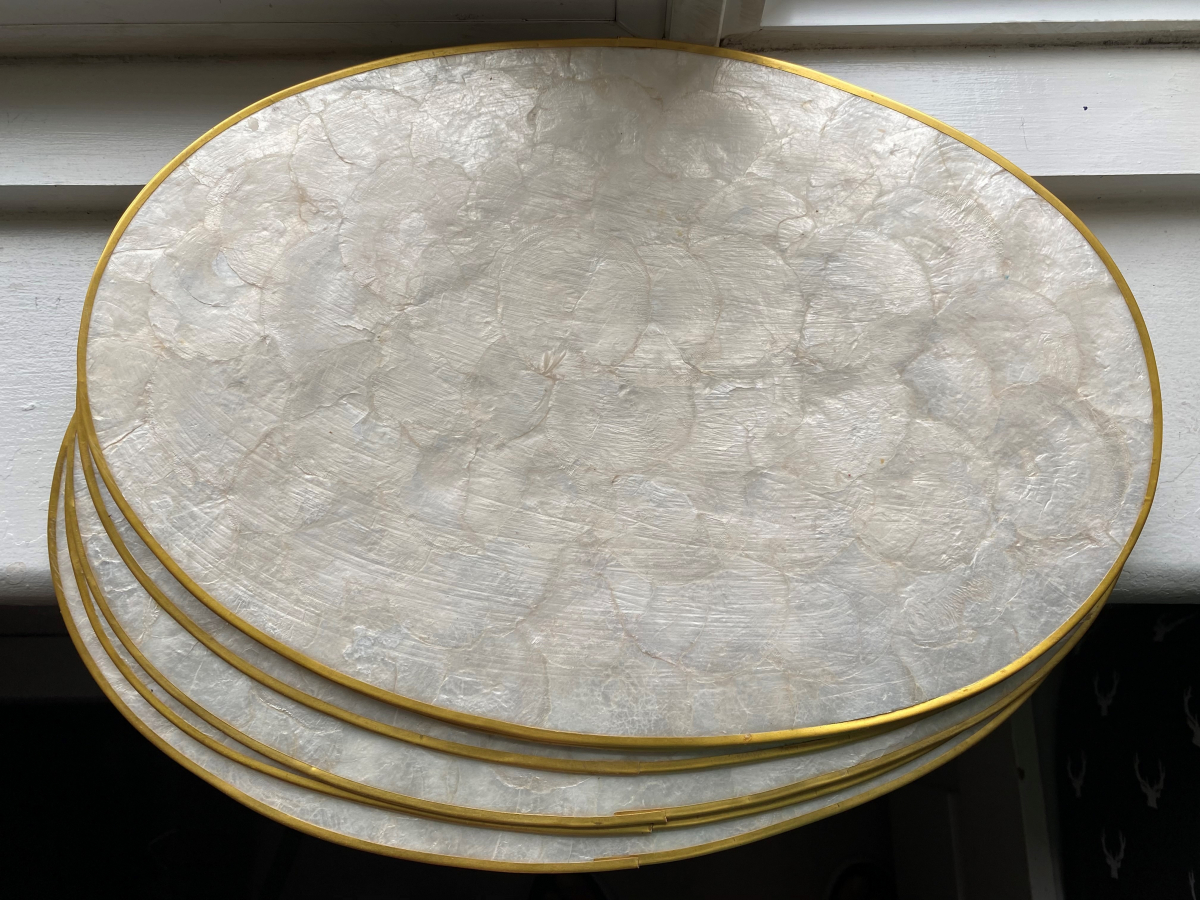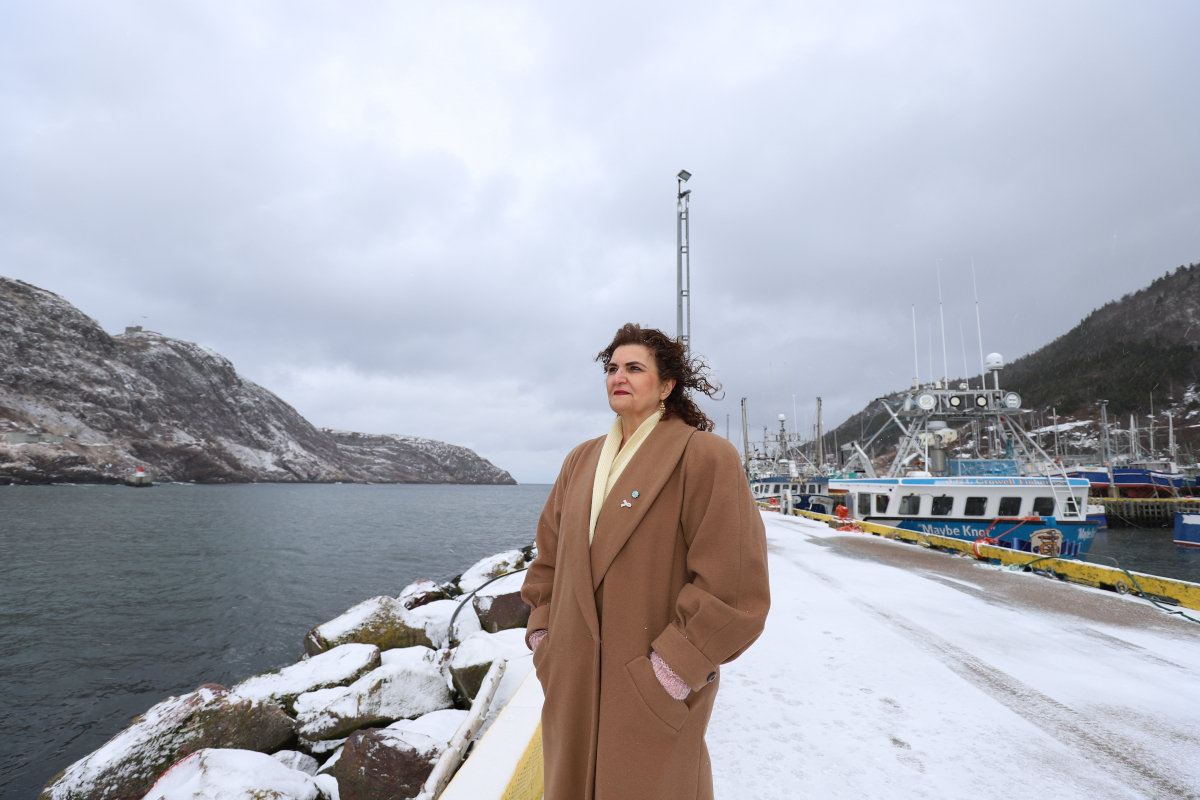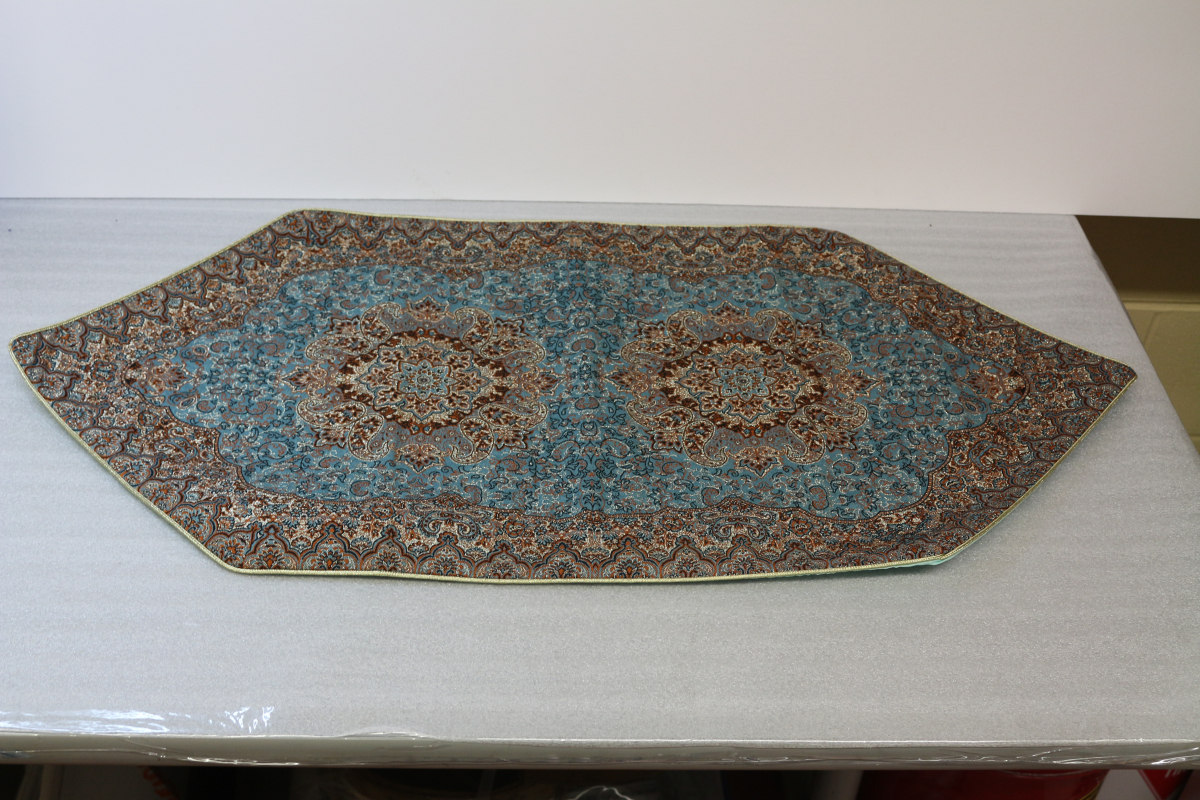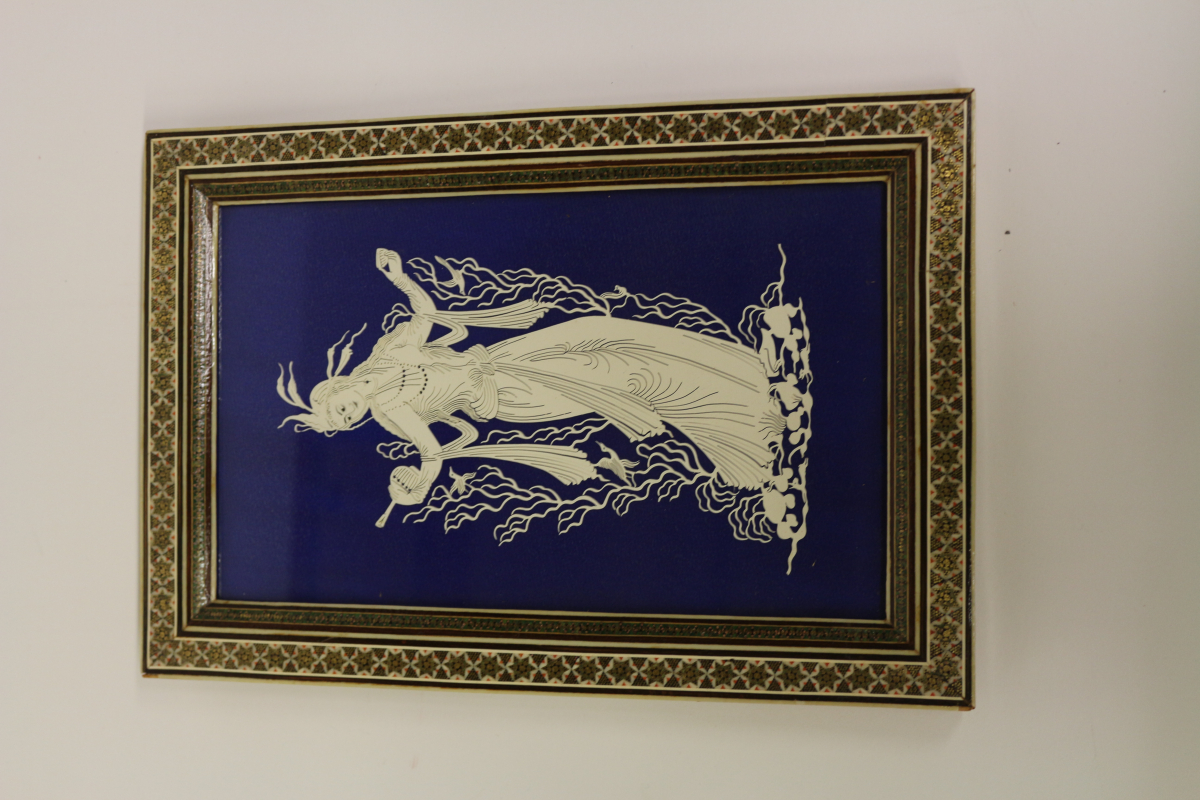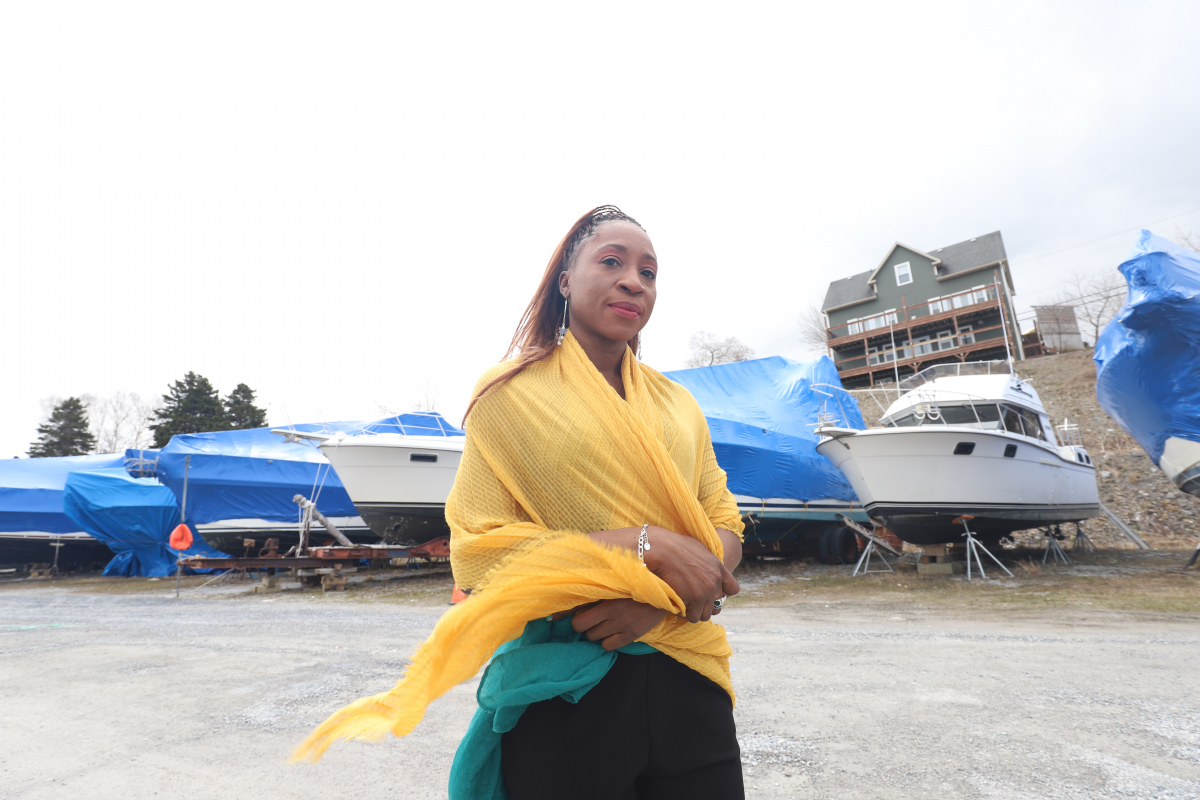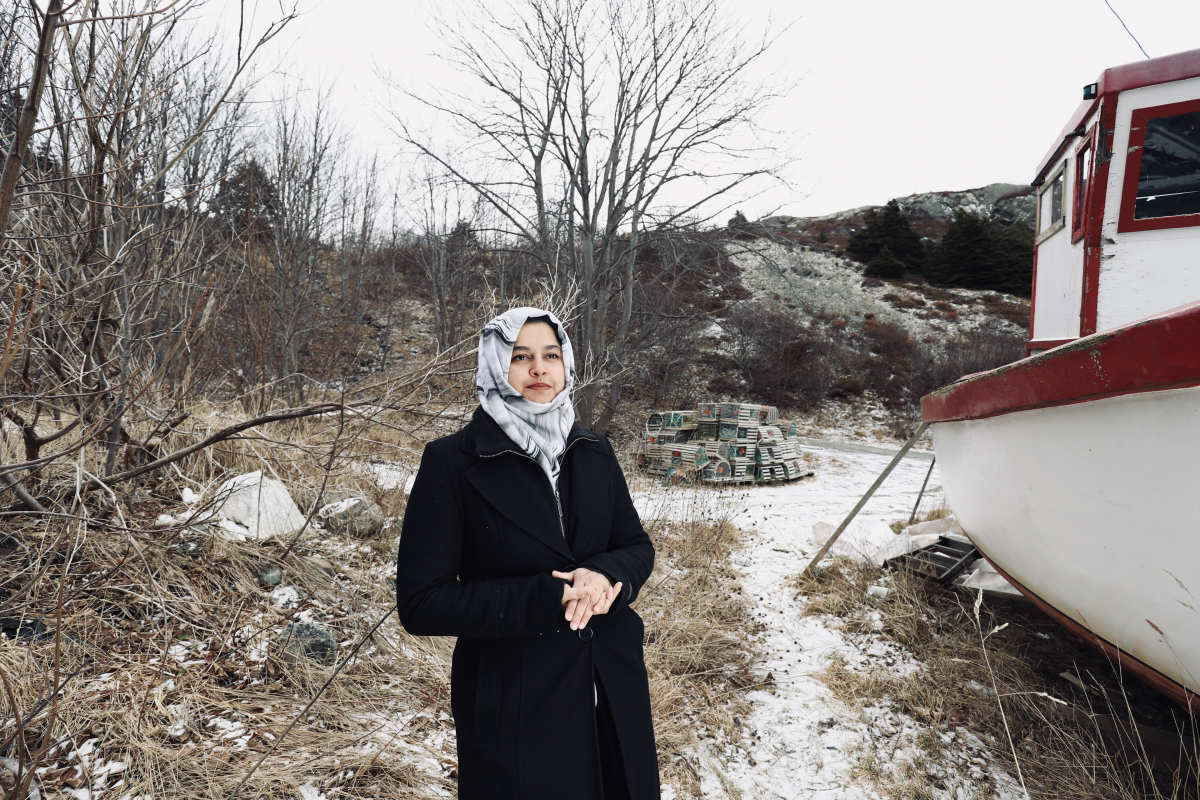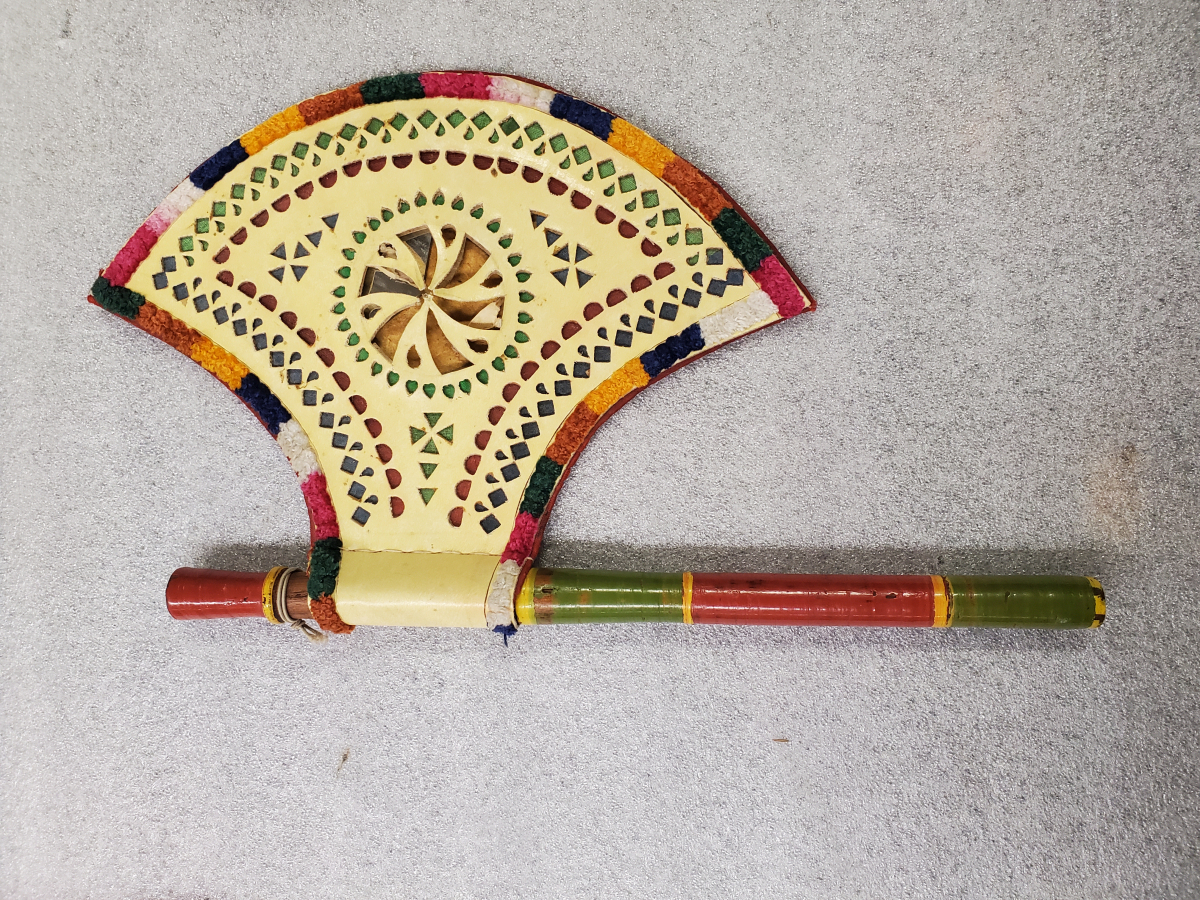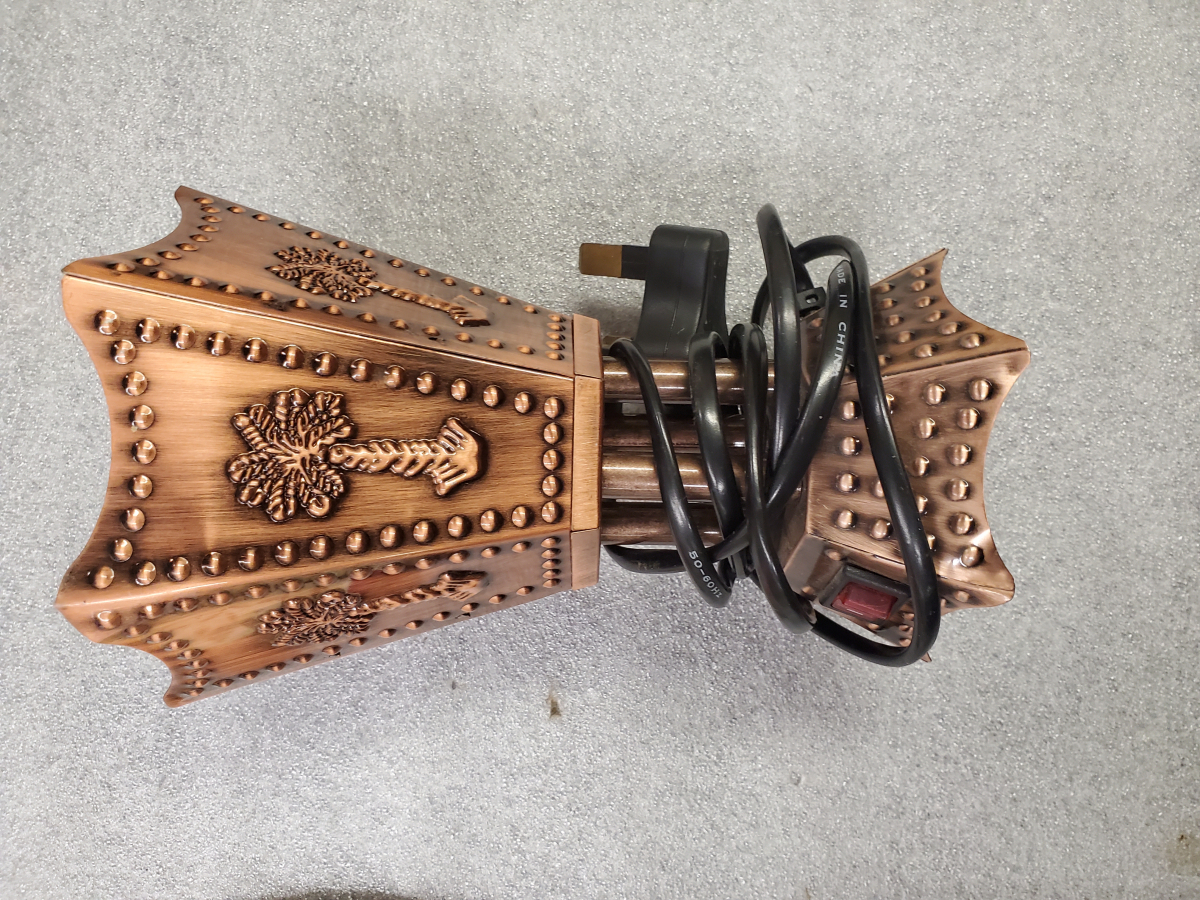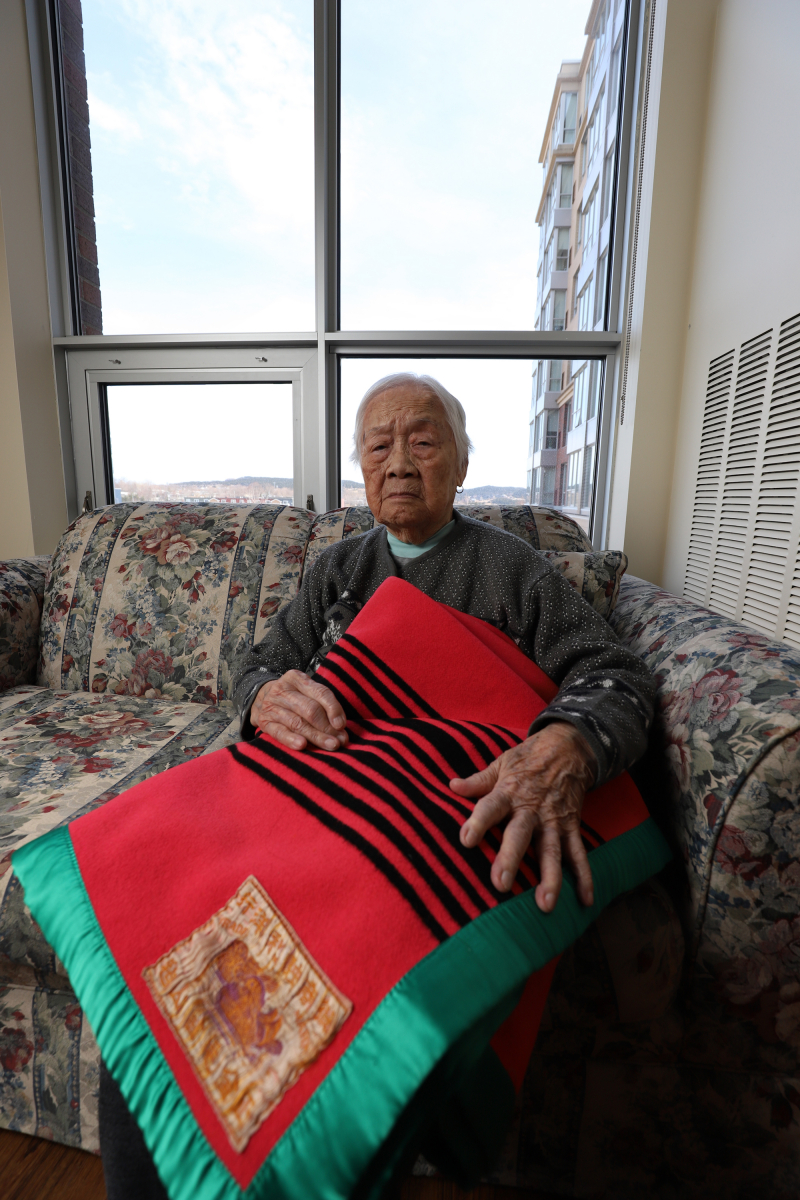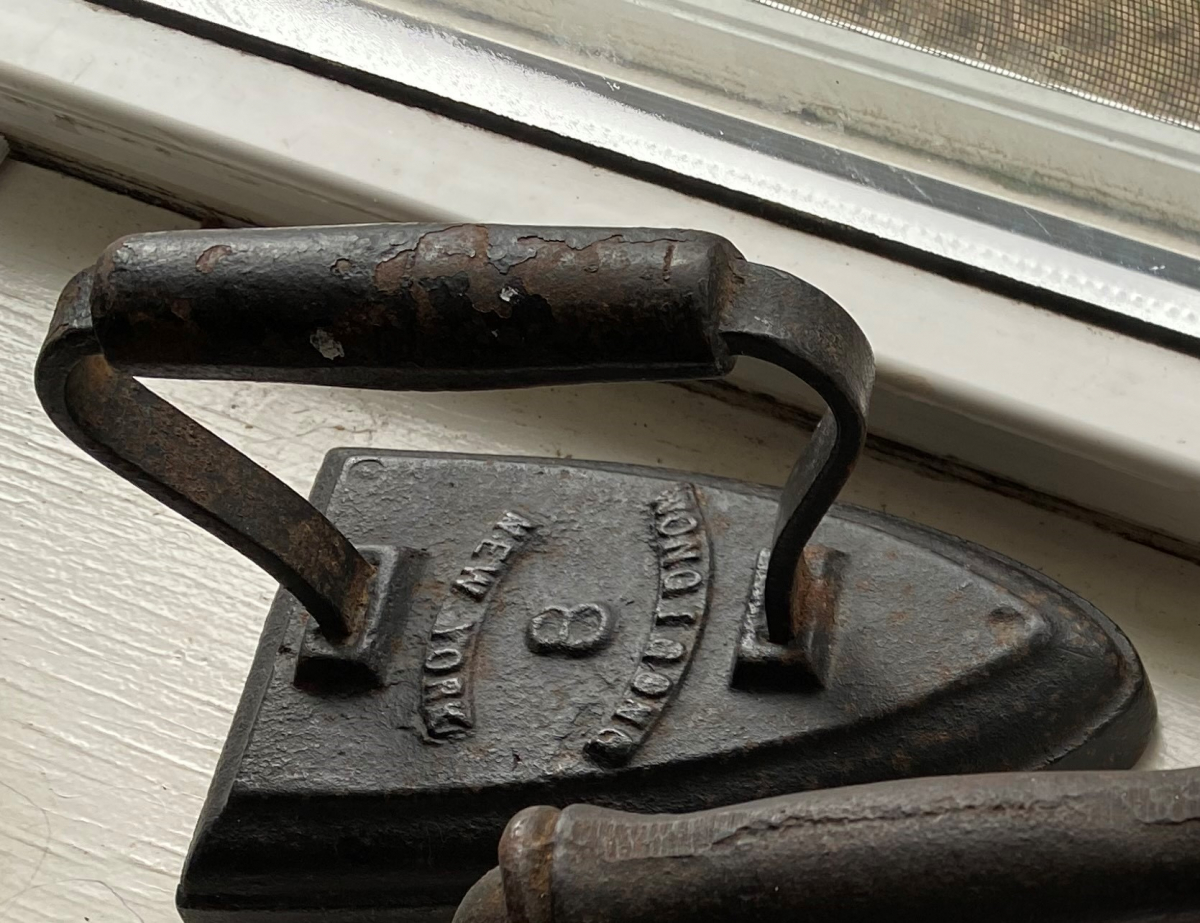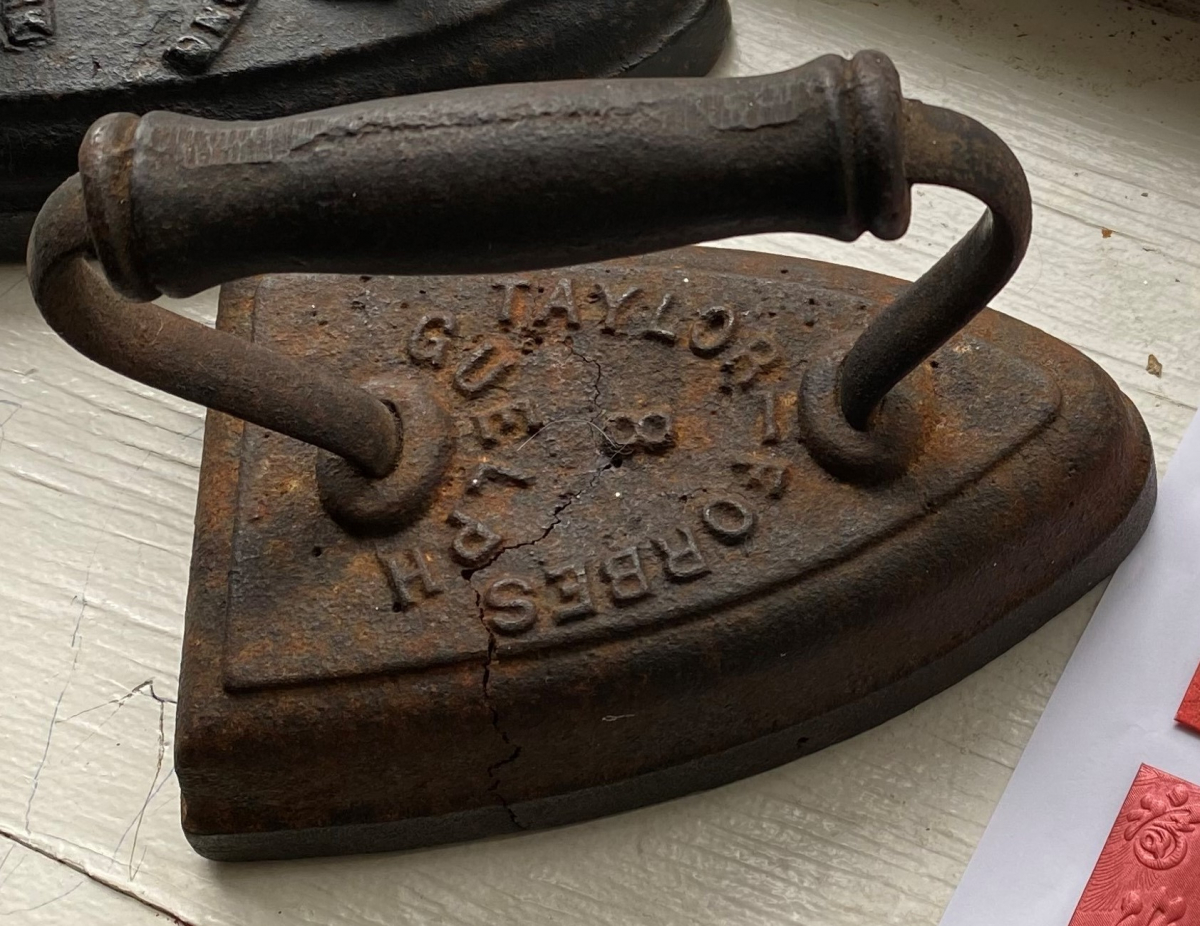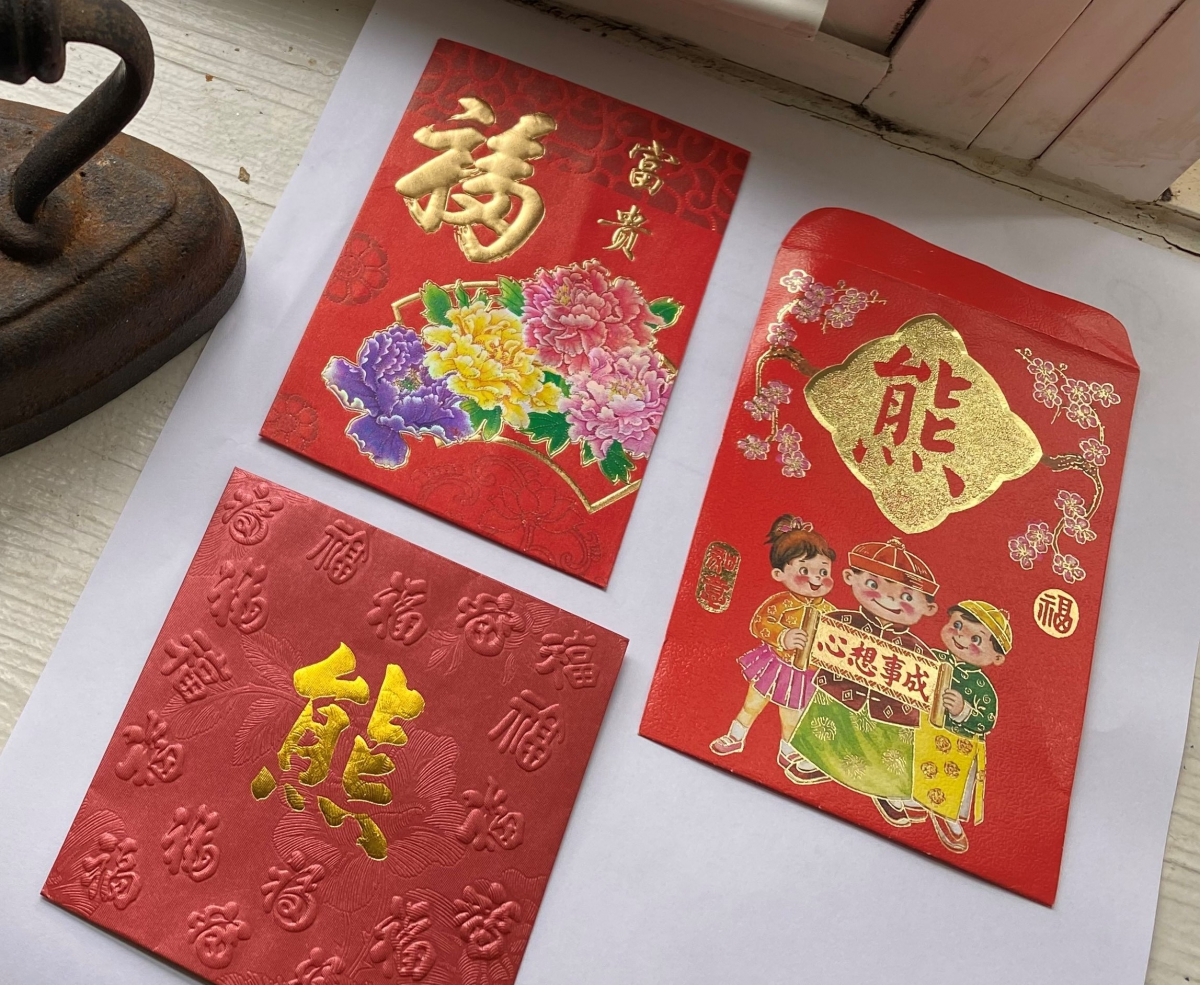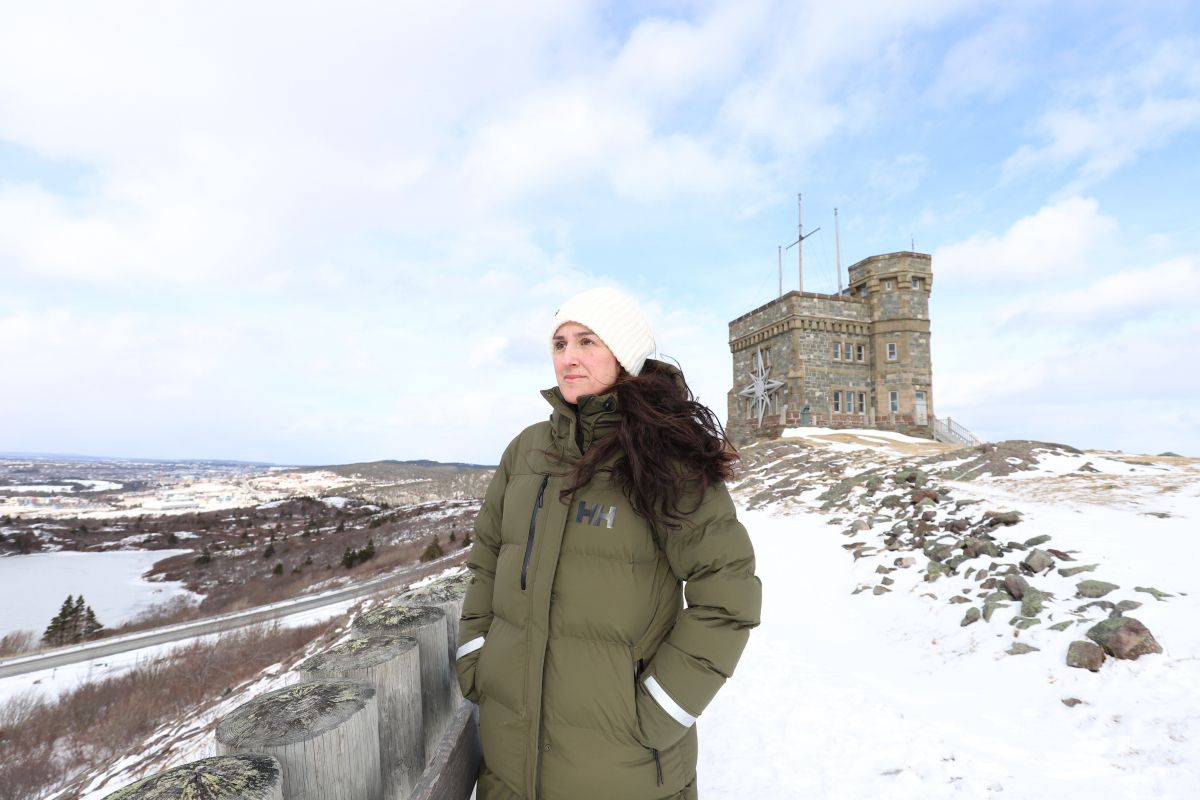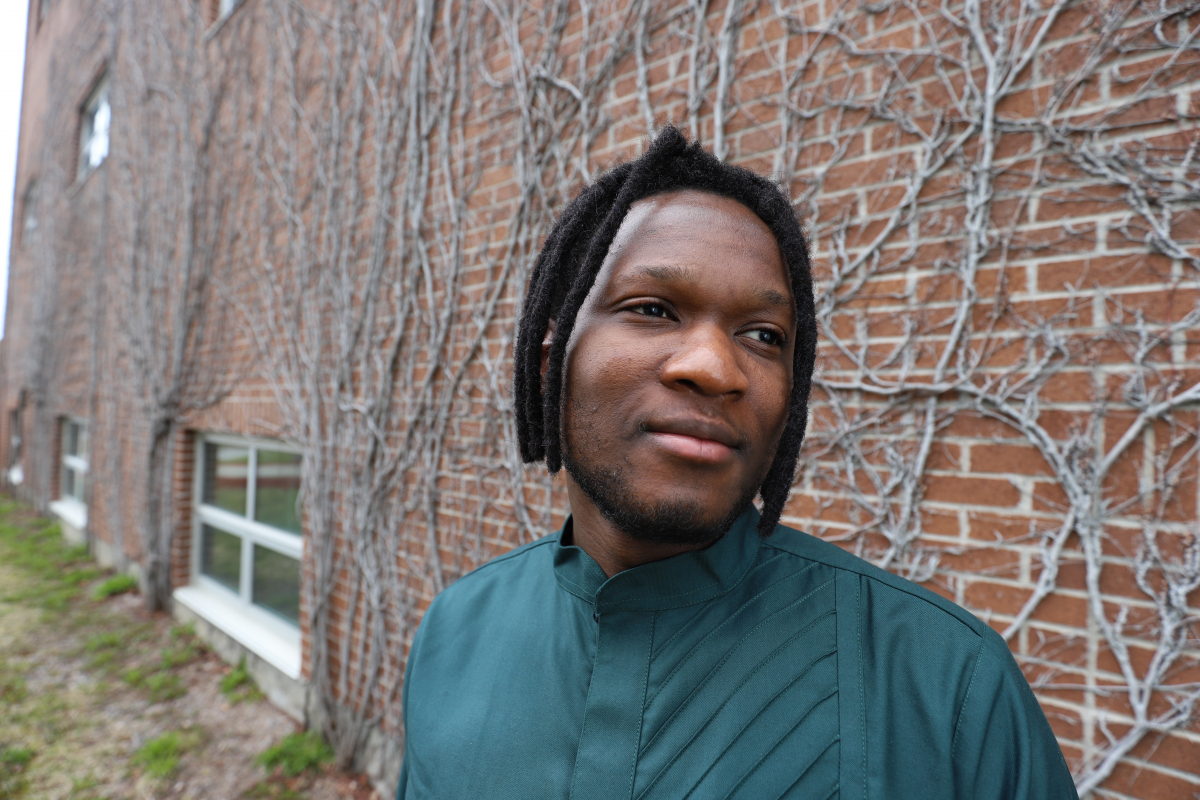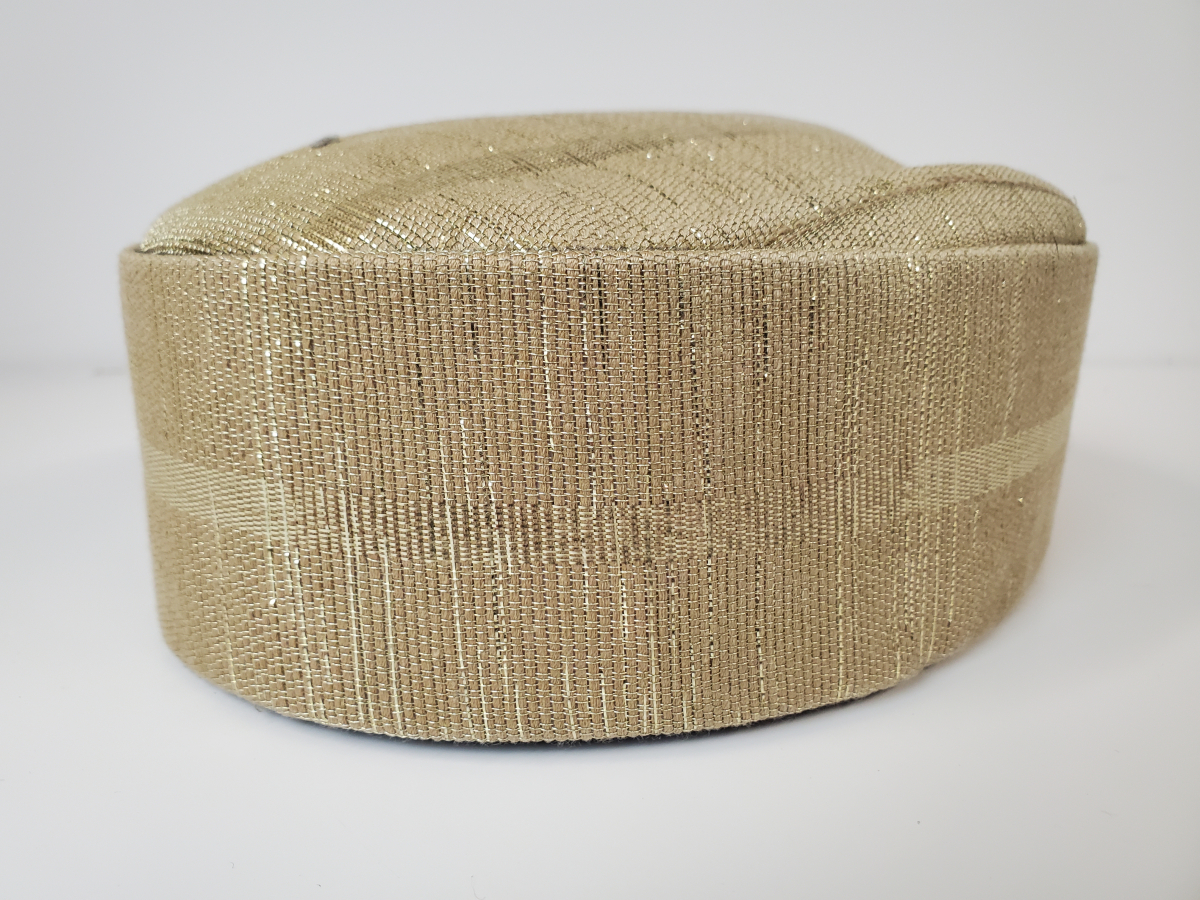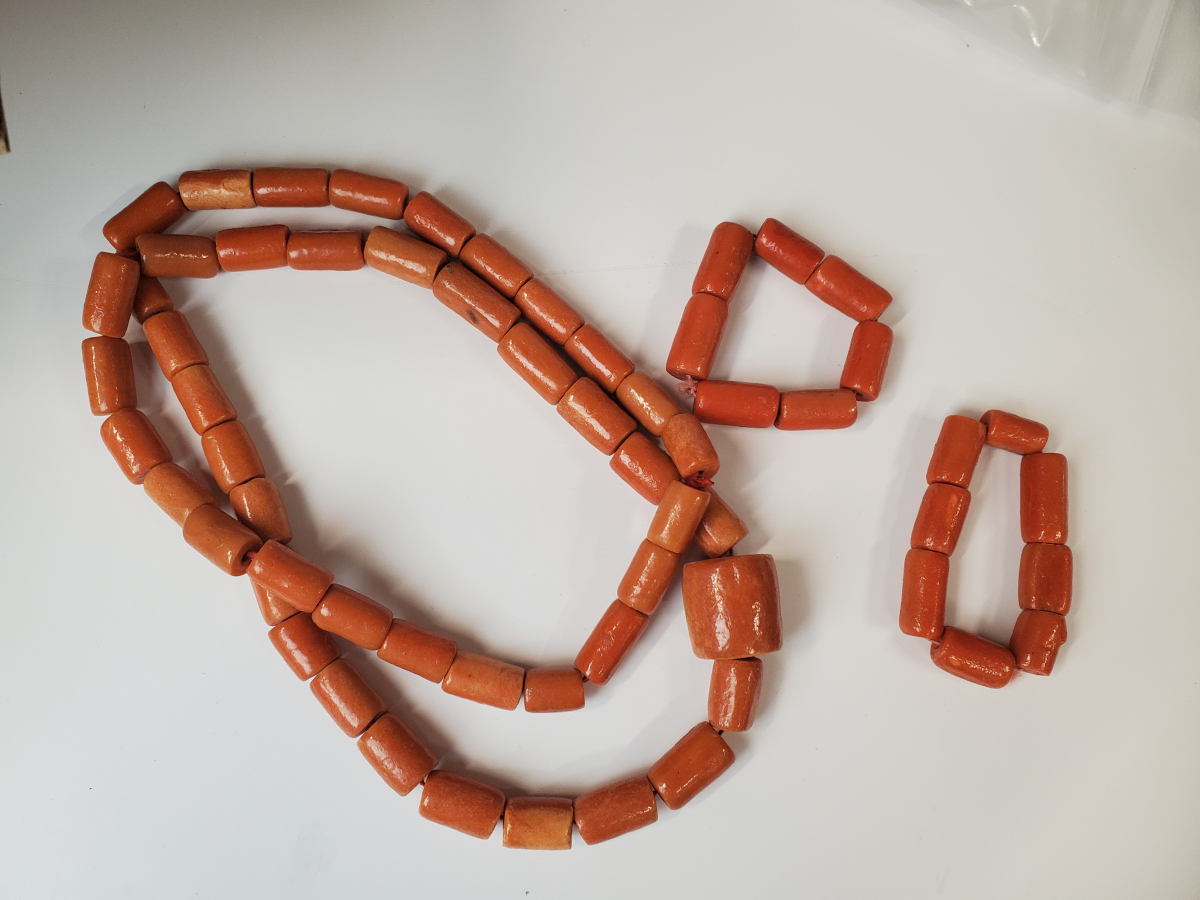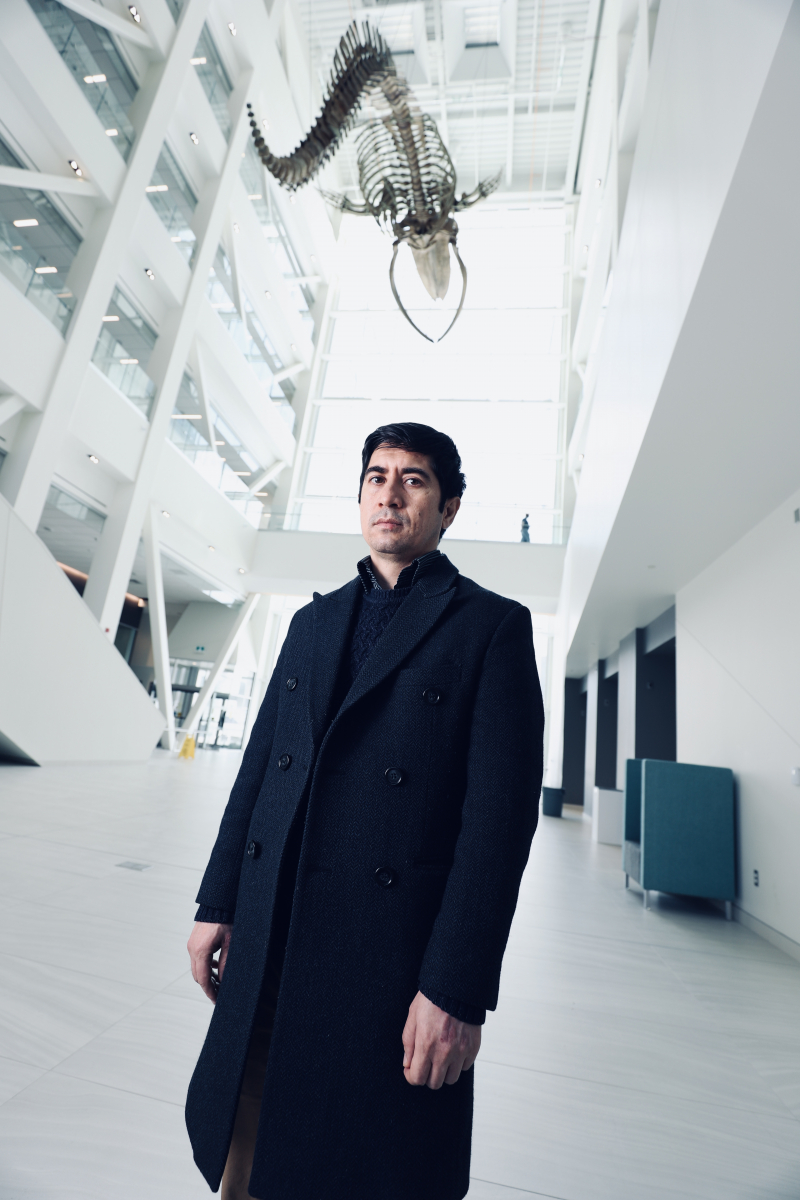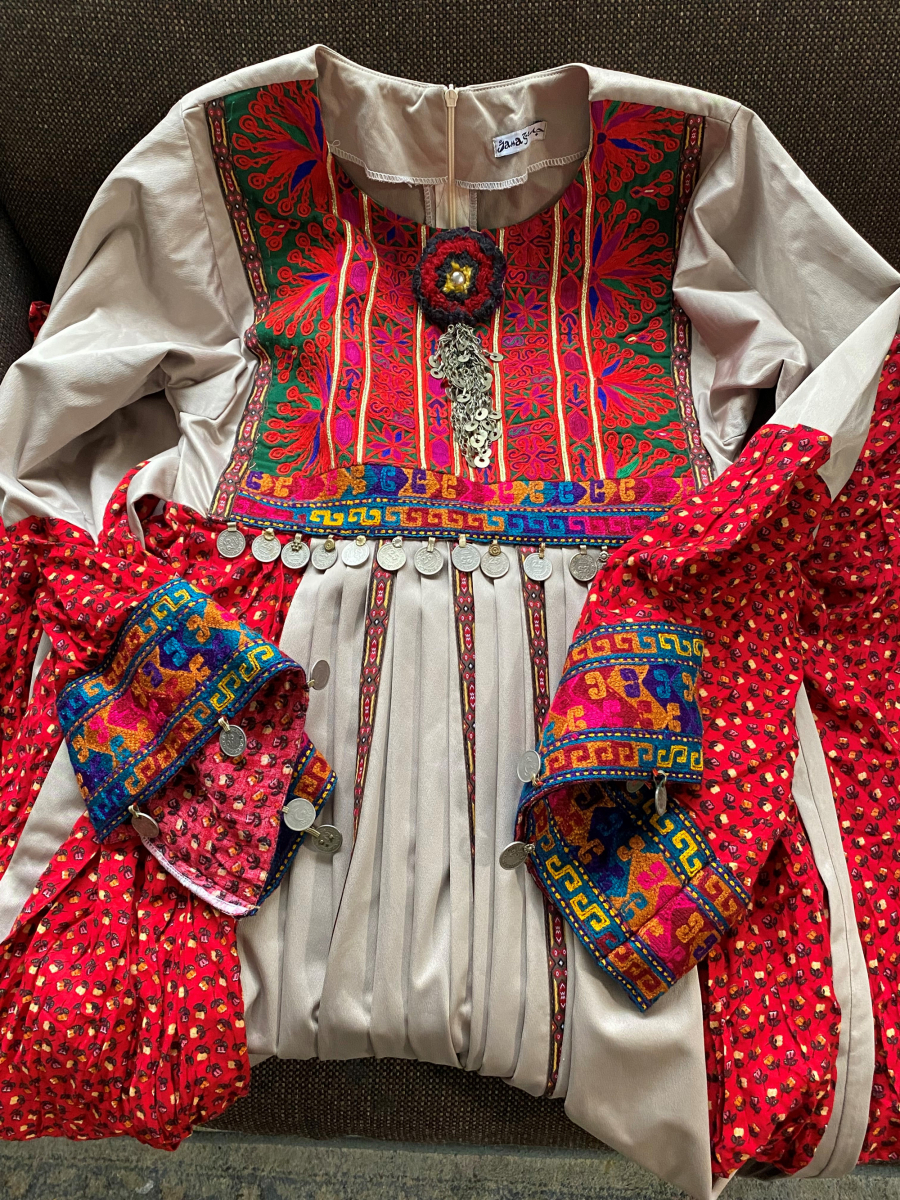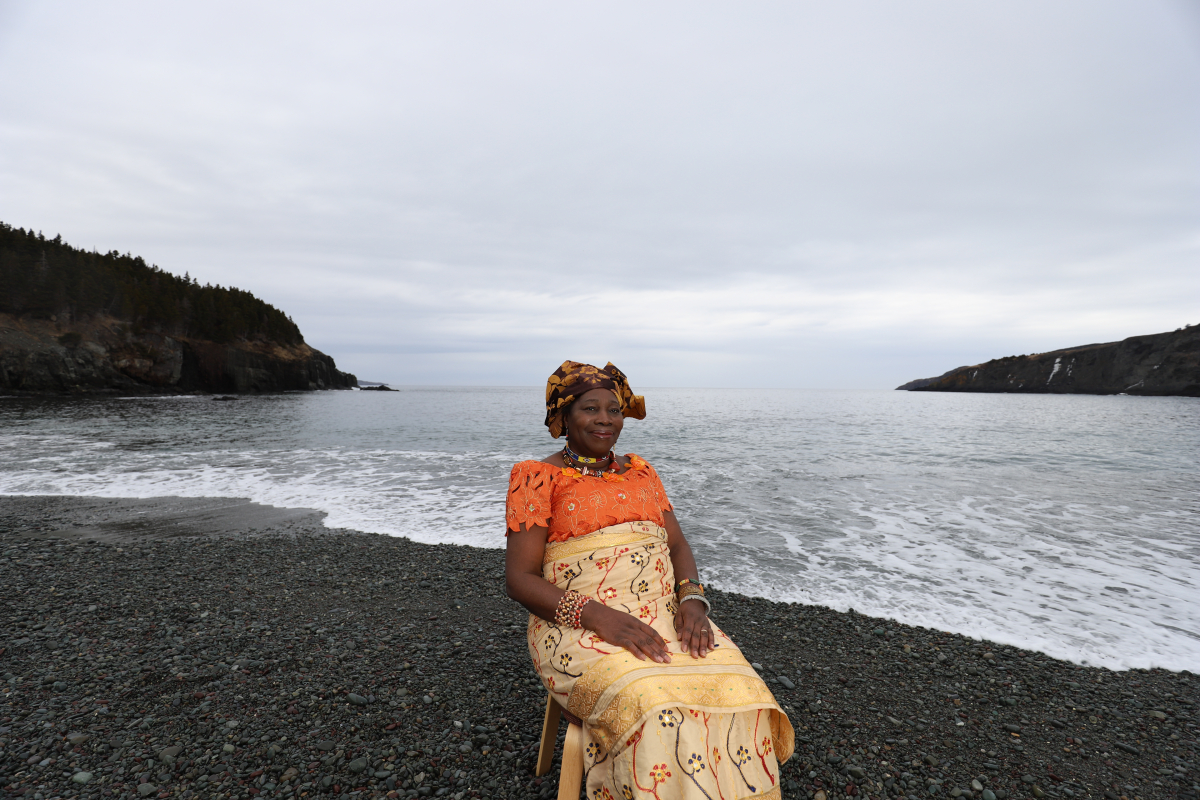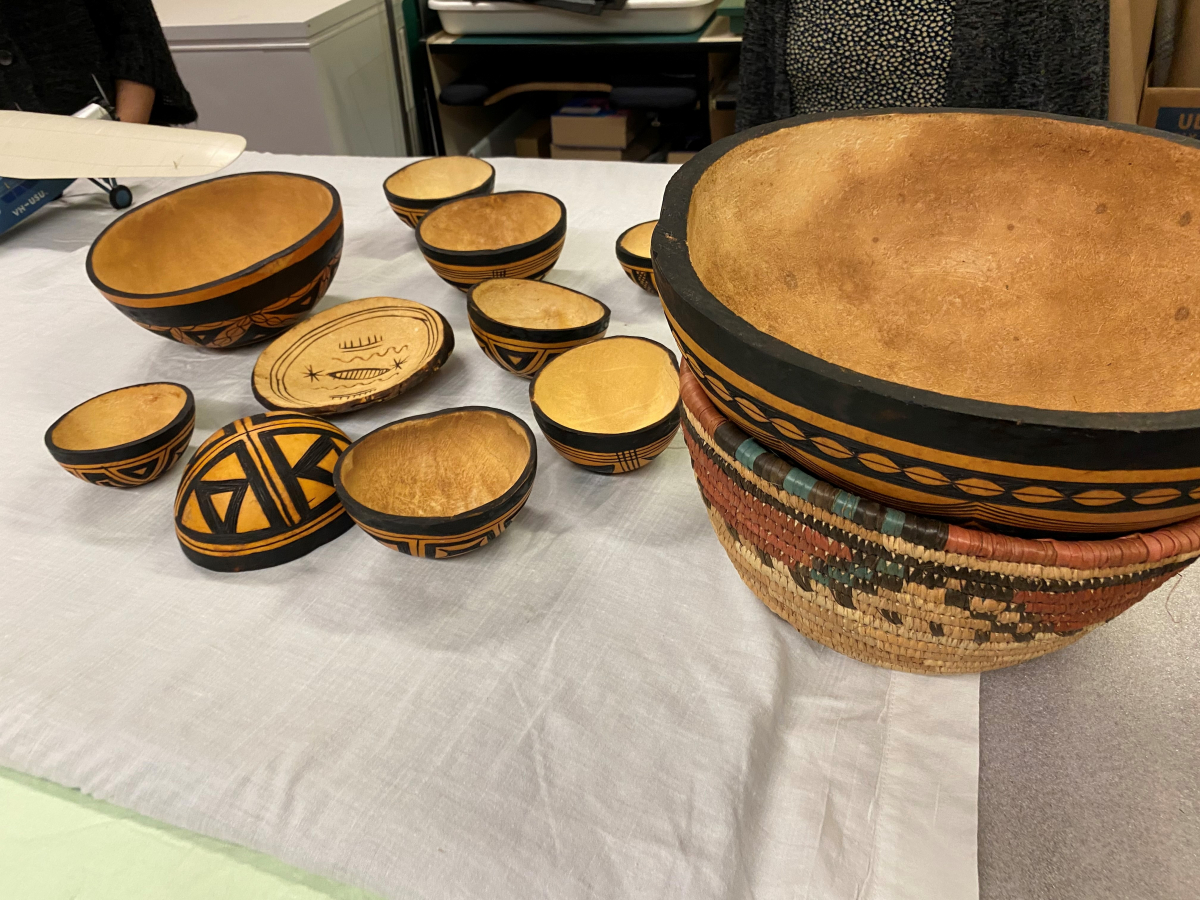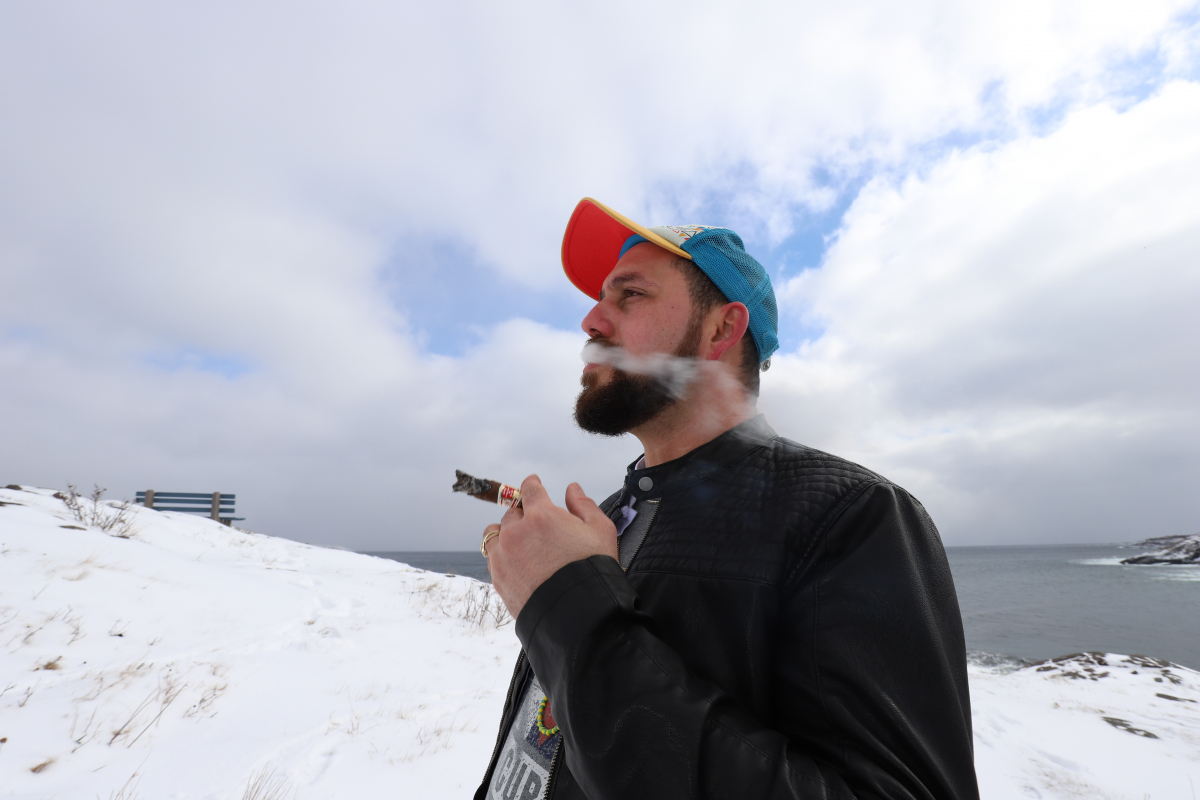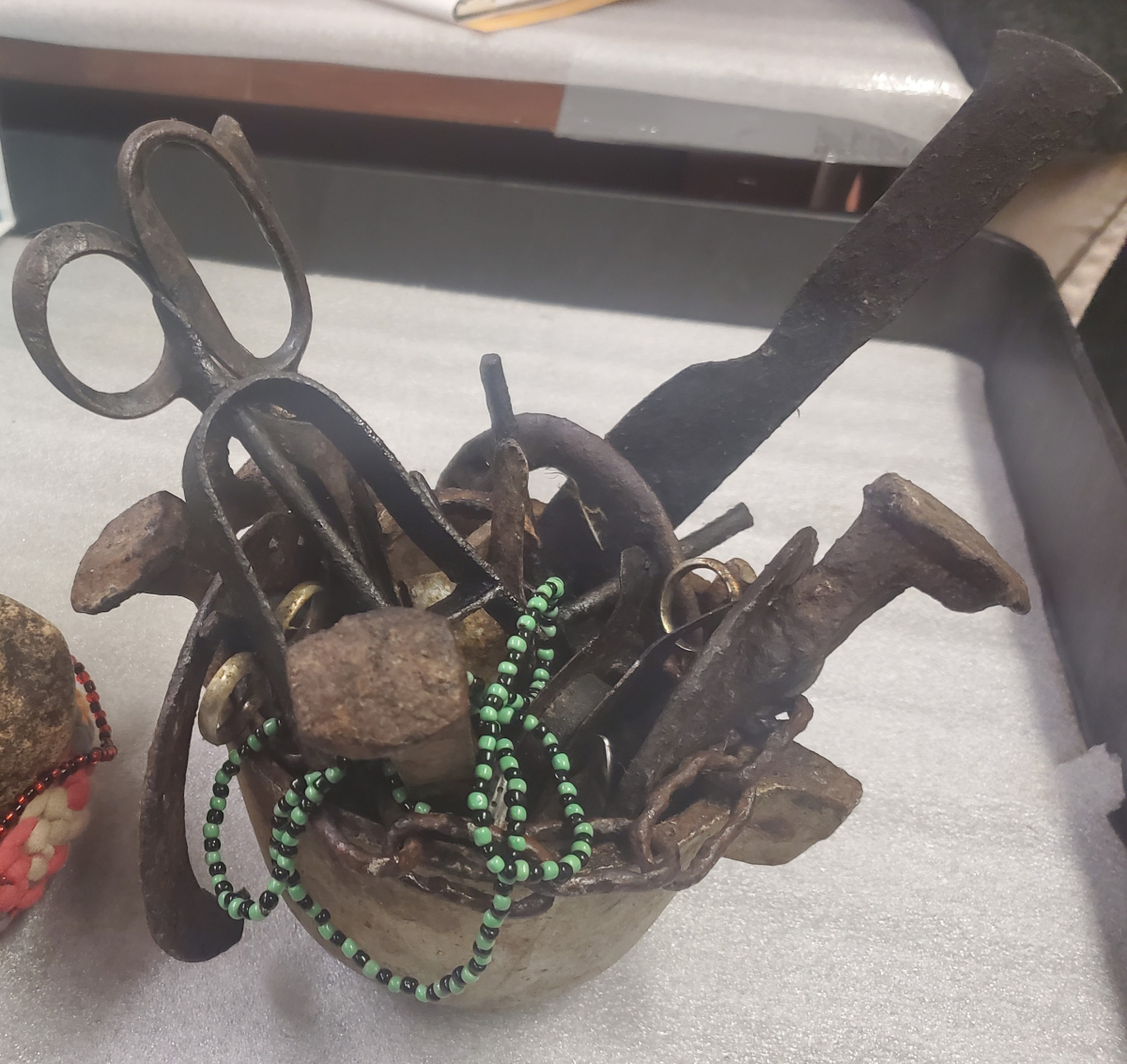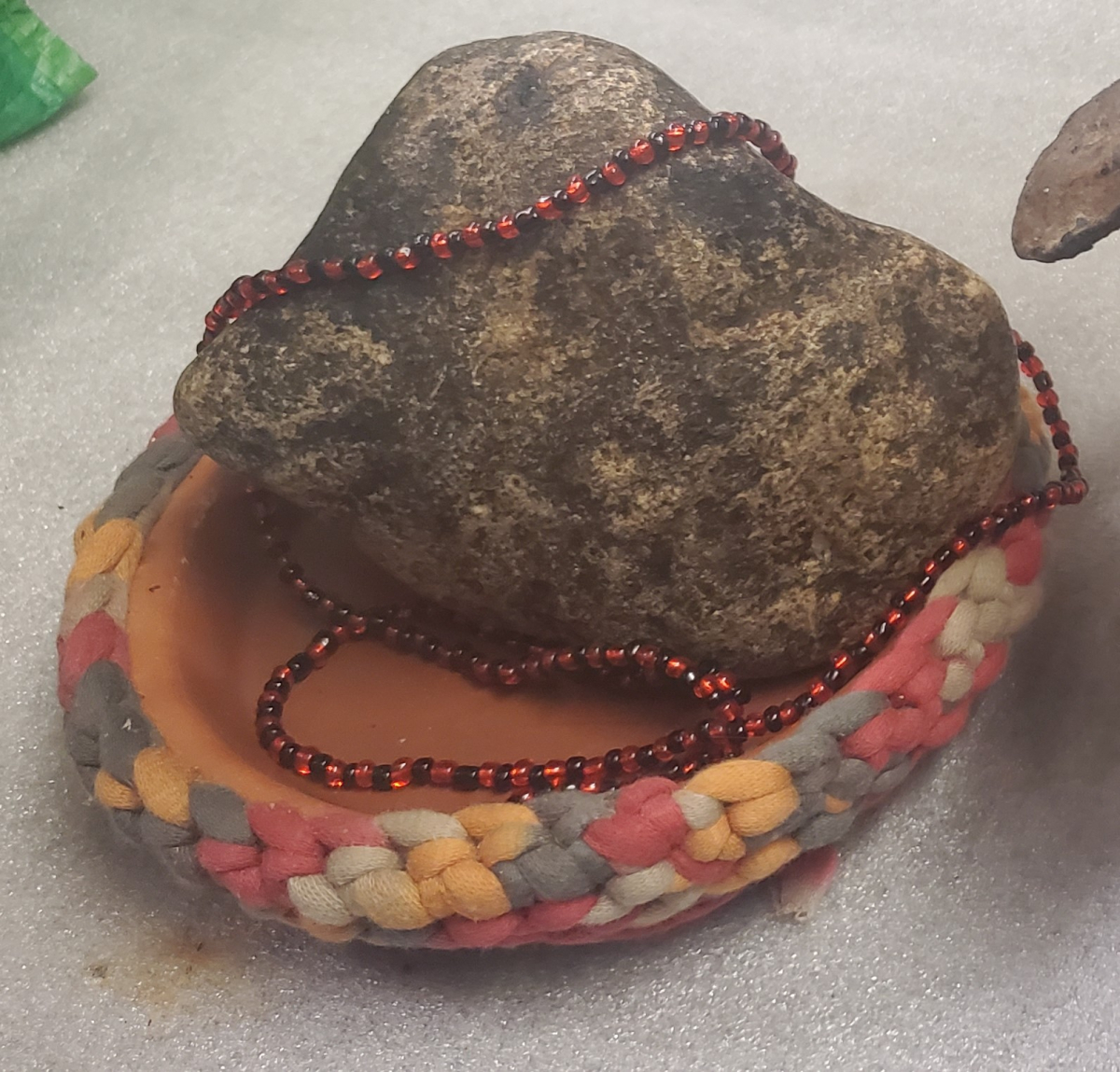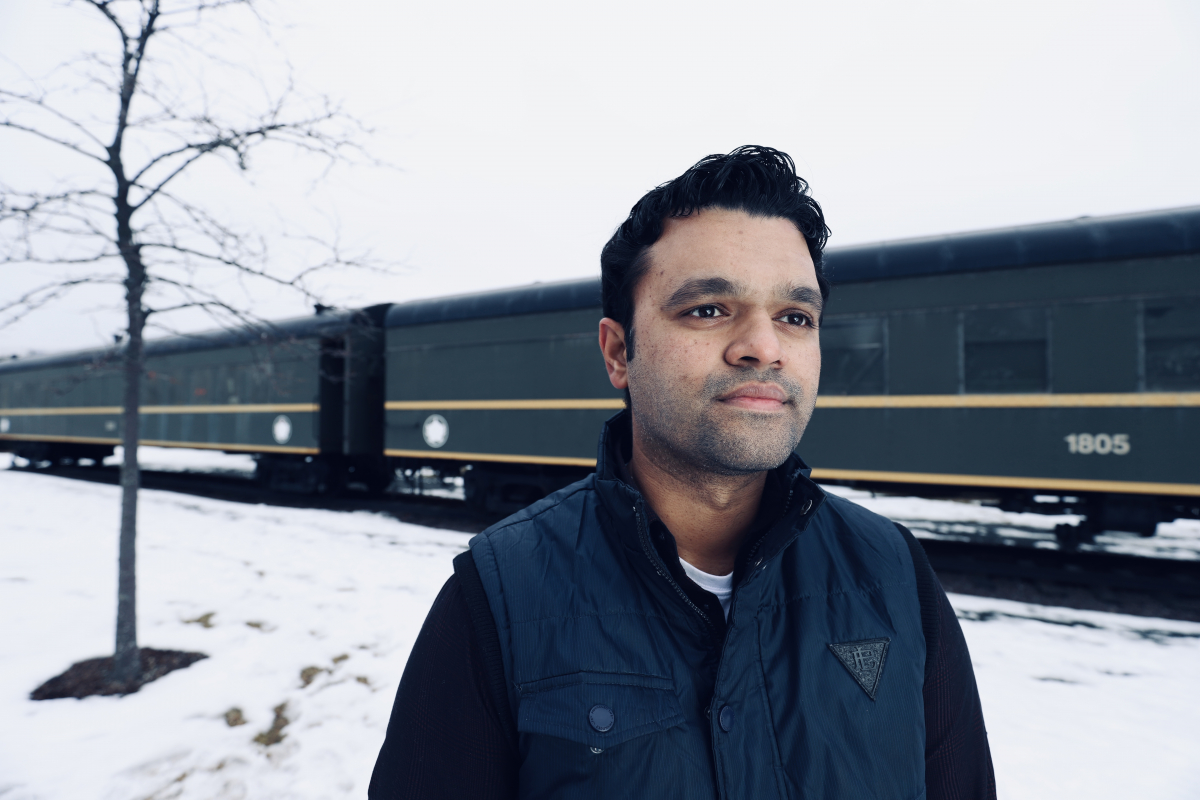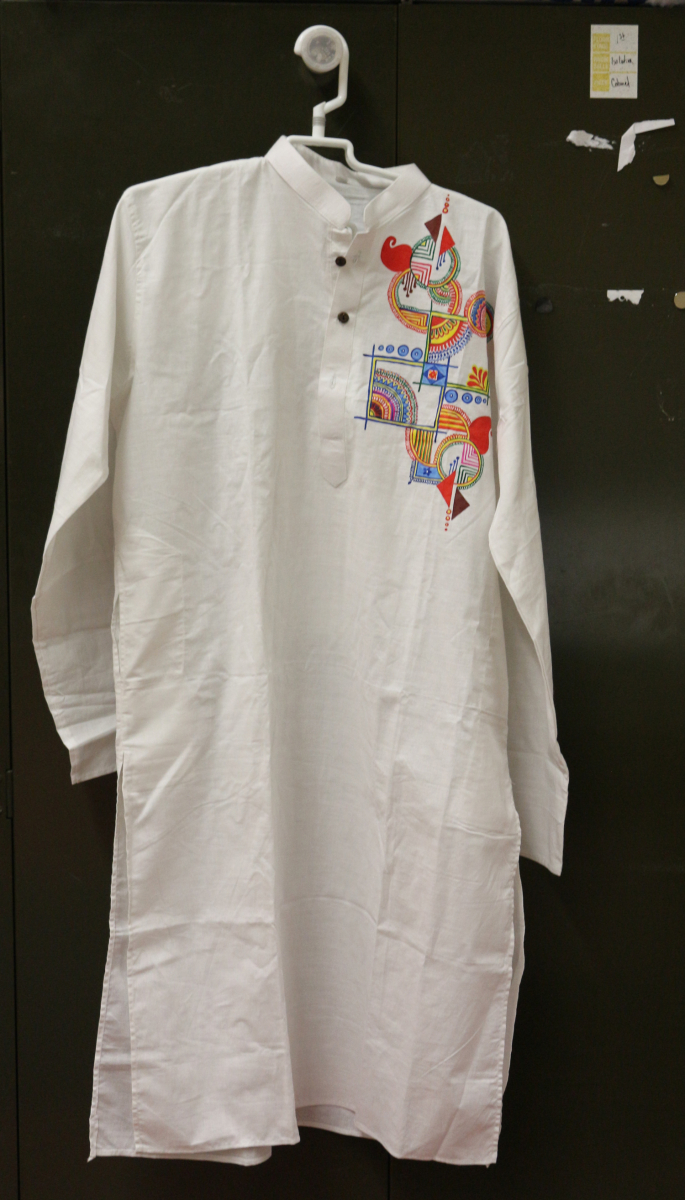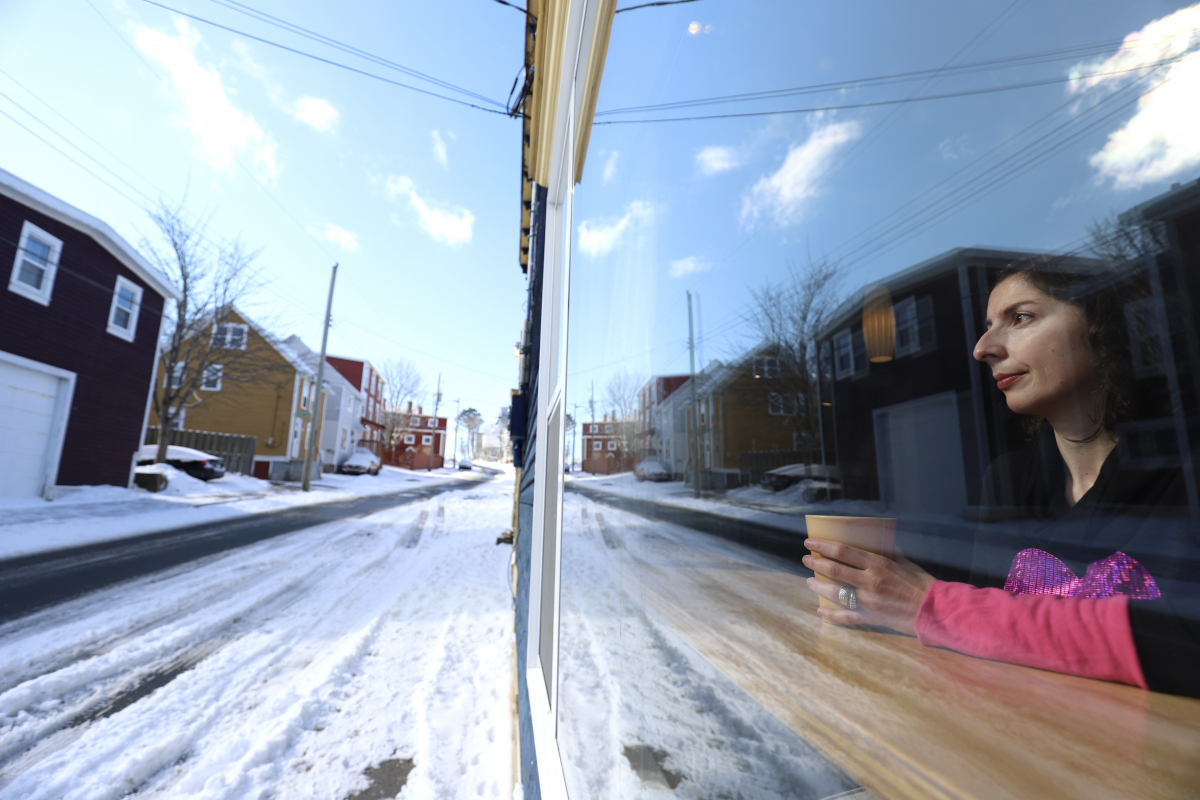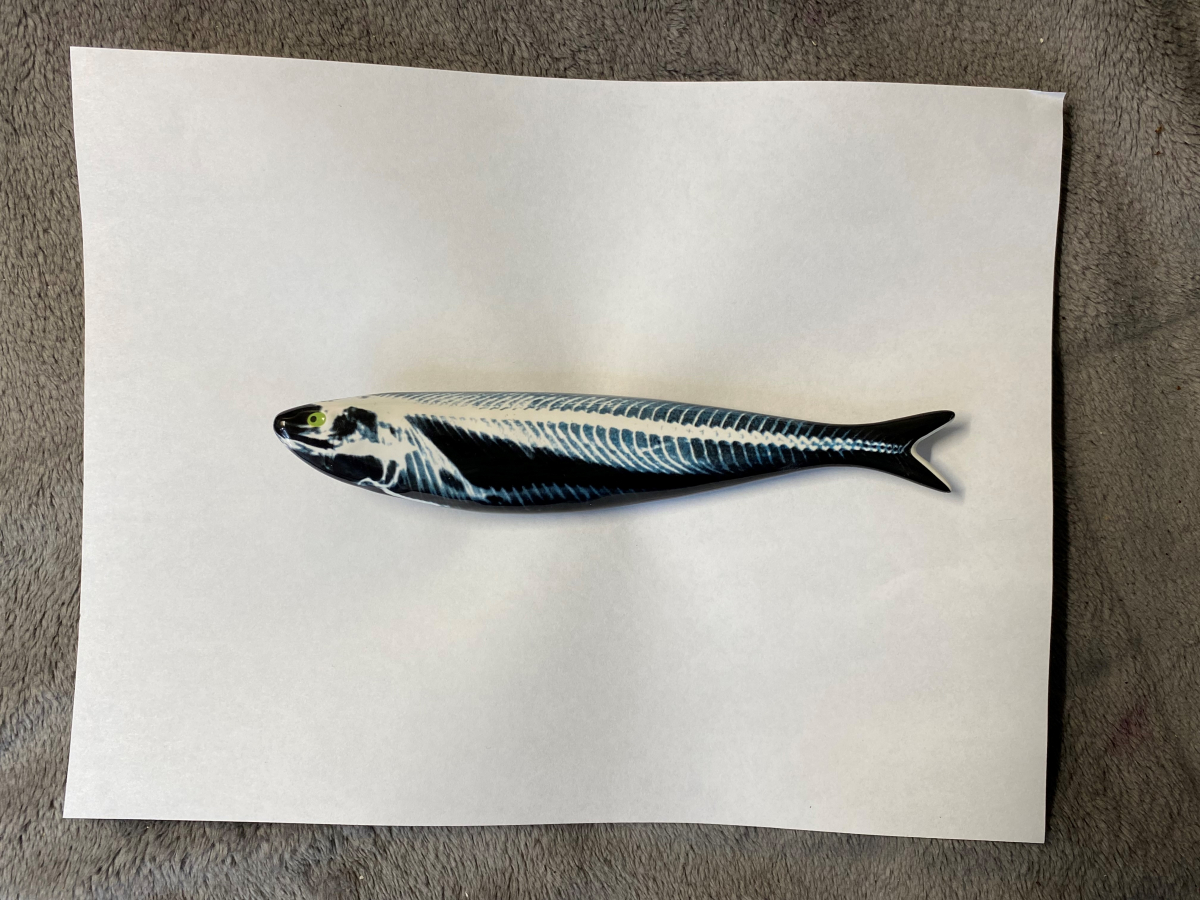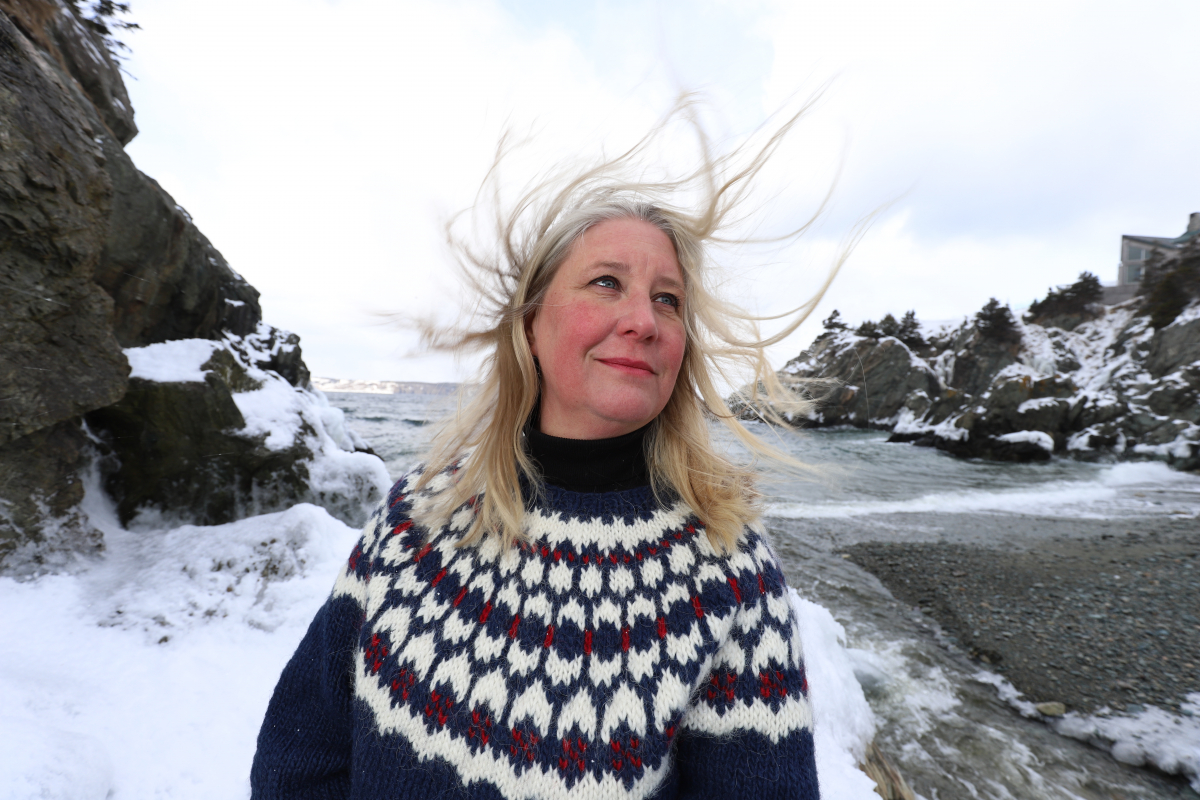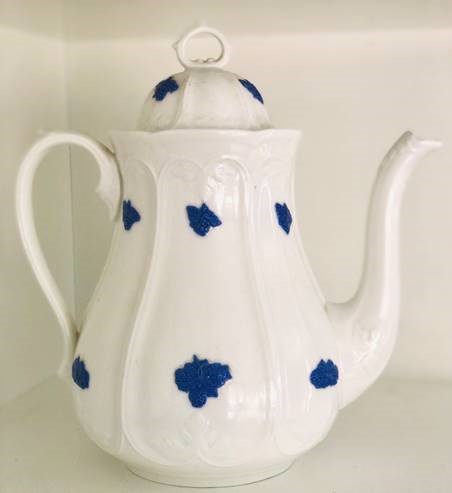At Home: Too Far, Too Close
Claudia Andrea Lopez DiazArgentina – Colombia "I think home is the place where you are happy. And now, I am happy here."
I was born in Colombia and lived in Argentina for more than 15 years. We moved to Canada because my husband was admitted into a Ph.D. program at Memorial University. When I arrived here, I cried a lot because I missed my home and friends. Everything was new to me, the people, the food, and the language. Finding a good job and friends has been very hard. At the beginning of the COVID-19 Pandemic, I was scared for the first time. We didn't have many friends, and I asked my husband what would happen if both of us got the virus at the same time? We only had each other. Now we have new friends in Newfoundland and they are our new family. The item here is a wooden cup (and straw) for drinking mate. It has a social function, and people drink mate with their close friends. It was the first item I put in my luggage.
Traditional Drinking Cup and Straw This traditional cup and straw are used to drink yerba mate, a hot drink made from ground herbs and stems. It’s been enjoyed as a social custom for hundreds of years in parts of South America. The cup from which mate is consumed is almost as important to the individual as the beverage. |
|
Eugene SimbajonThe Philippines "Home is HERE, the warmth of Newfoundlanders kept me feel at home. I have a very good and caring church family here."
I moved to Newfoundland in 2014, came in as a foreign worker from the Philippines. It is hard to be away from your family, especially with the Filipino culture that we almost grow old together with siblings and parents. But the need for better opportunities for my kids drove me to go abroad. Another thing I really miss is the food. Not all ingredients are available here and you have to be creative and resourceful to get as authentic as possible. I find Newfoundland to be really genuine. That is unique for me. People greet you on the street, shop and restaurant. One of the friendliest places I've been. The Philippines is surrounded by waters and we are basically an island country and you see a lot of items and souvenirs that are made from seashells.
Plates These plates are made from the shell of the windowpane oyster which is only found in the Gulf of Aden in the Filipino province of Capiz. The shells are commonly used to create a number of products including plates. |
|
Taraneh SamimiIran "For me, home is where there is freedom, where you can choose freely whatever you think or worship. I am here because I have freedom."
I grew up in Tehran, the capital of Iran. It’s metropolitan. Unlike Tehran, St. John’s is a small city, but I found people here are nice and friendly and I should say that’s something quite unique. I am married to a Newfoundlander. I make Iranian foods but not always. It actually takes lots of time to make it. I make Canadian cuisine with the Persian spice. So, I find that way I can make a bridge between Iranian and Canadian food traditions. I have brought Persian rugs, miniatures, termeh, carvings, and music instruments. I keep them as the reminder of my homeland and its culture. I also have some Newfoundland items in my home such as mittens, and an old photo of a boat, and a picture of some boys playing hockey.
Termeh Table Runner Originating in the Iranian cities of Yazd and Isfahan, termeh cloth is one of the oldest Persian arts, with colourful floral and paisley designs. Traditional weaving of termeh is time-consuming. A good weaver can produce only 25-30 cm a day. It is used to make decorative accessories, prayer rugs and clothes.
Laser Cut Figure in Khatam Kari Frame Khatam Kari, or marquetry work, was used to make this frame. Khatam Kari uses a variety of woods, bleached camel bone, ivory, seashells, and metals. |
|
Ingrid WatkinsJamaica "Home is where you live, and I am very fortunate to have two homes. Home is your comfort zone where you find peace of mind."
I came here as a family, my daughter’s father is from here. I relocated here back in 2014. I lived in St. John’s for roughly five years. Now I live in Corner Brook. I realized that Newfoundland and Jamaica are similar in some ways. People here are very friendly and accommodating. I have met some wonderful people who are my family away from home who make sure I don’t miss out on family times. In earlier centuries, Jamaica traded (money) with Newfoundland codfish (salt fish) for rum (Screech) which came from Jamaica. We have some similarities, where the Jamaica Patois dialogue and some of the Newfoundland dialogue sounded alike so I did not have a hard time understanding the language and adjusting. But my first time here I have a welcoming first from the island–50 centimeters of snow. Yes, I wanted to rush back home! |
|
Sana JamilIndia "Home is where you can build happy memories."
I came to Newfoundland with my family in 2016 when my spouse found an opportunity at MUN as a postdoctoral fellow. Also, I joined MUN soon after to continue my education. I am originally from India, but I was born, raised, educated, married, and raised my own family in Saudi Arabia. I am now a Canadian citizen. Since we are away from our homeland, it becomes absolutely important to get connected to the community that we live in now. And bond with people who have similar cultural values, so our children can become acquainted with the culture. When we arrived there were limited and pricey food options. Things have changed over the past six years, and now there are more Asian restaurants and more variety at grocery stores. All of this makes us feel more welcome.
Traditional Fan
Electric Incense (Bakhoor) Burner
|
|
Kwan Song HumChina Currently residing in St. John’s, Kwan Song Hum has led an active, independent life and still holds strong cultural beliefs and culinary traditions of her home country.
Born in Hoiping, China, Kwan married George Mong Hong in 1936. He was working in St. John’s since 1932 with his father in a Chinese laundry on Gower Street. George returned to China for their wedding, but the imminent threat of WWII forced his return to Newfoundland in 1937 while Kwan was pregnant. George was unable to return to China during the war period and, in 1945, died suddenly. In 1950, Kwan bid farewell to her son Kim, aged 13, as he left for St. John’s to work alongside his grandfather. In 1967, Kwan moved to Newfoundland to join Kim* and his growing family. One cherished keepsake for Kwan is a woollen blanket (held in the portrait above), a wedding gift from George, brought from Canada to China, then back to Newfoundland – a symbolic reminder of their entwined journeys to the province. *Dr. Kim Hong became a prominent radiation oncologist and community leader in Newfoundland.
Sad Iron
Taylor-Forbes 8 Sad Iron Sad irons, developed in ancient China, found their way into worldwide use. They were used in Chinese laundries in Newfoundland and Labrador. The number “8” refers to the weight, in pounds, of the iron.
Chinese Red Envelope (known as “lai see” in Cantonese and “hong bao” in Mandarin) An ornate red pocket of paper commonly decorated with Chinese calligraphy and symbols conveys good luck and prosperity on the recipient. It is a traditional Chinese custom to gift money for special occasions such as Chinese New Year, weddings, and birthdays. Portrait: Dr. Kim Hong |
|
Mia Duygu SalmanTurkey "For me, Home can be any place where you are happy."
I was born and raised in Turkey (cup and saucer). In 2018, my husband brought forward the idea to move to Canada. I was both surprised and apprehensive because I was supposed to leave many things in my home country. My husband started to study at Memorial University. It is a big chance to rebuild your entire life. You do not have to accept what life brings to you. Through my Canada journey, I have focused on my goal to be successful in my new life. Now that I have accomplished my goal and I feel like I can do anything. Thus, I am so proud of myself, and my journey has not ended yet. People are very friendly and helpful in all ways and I should say St. John’s is totally a unique place in Canada. I am so grateful to live here. |
|
Omodolor Kelvin ChukwukaNigeria "For me, home is where expressing myself should not be a problem. Home is where I feel safe, welcome, and where I can progress. And, of course, home is where my heart is."
I am originally from Benin City in Edo State, Nigeria located in West Africa. I immigrated to Canada in 2019 because of the opportunity that Memorial University offers to international students. When I arrived here, I was fascinated by the people of this beautiful province Newfoundland and Labrador. They have showed me love and kindness up til today and that level of selflessness is very hard to find. I started to meet people from the First Pentecostal Church in Corner Brook, and then I made friends in school. I met my fiancée, who is a registered nurse and now my wife. It’s so unique here, from the outdoors to the ocean, I love it all. Truly, Newfoundlanders and Labradorians are very homey and welcoming with good spirit, willing to help and provide you with the support you need and it was beyond my imagination.
Kufi: Hausa or Aso Oke Hat Hausa is the largest ethnic group in West and Central Africa. Caps like this one are worn by men for everyday and special occasions.
Beads The coral beads trace back to ancient Benin City and the Oba people. They are extremely important to the tribe’s attire, lifestyle, culture, and heritage and represent royalty, power and beauty. |
|
Maisam NajafizadaAfghanistan "The notion of home for me has become complicated. Home for me is now somewhere I feel safe, somewhere I have my family and friends."
I am an assistant professor with the Faculty of Medicine at Memorial University. I am originally from Afghanistan and I did my Master’s and Ph.D. at the University of Ottawa. I came to Newfoundland six years ago. Although, I have the experience of being away from home multiple times, leaving home has always been difficult, especially if you were forced out of your home. It is as if the feeling of emptiness is with you all the time. The artifact I present here is a traditional Afghan dress that ladies wear at parties and gatherings. It shows the colourful side of Afghanistan.
Traditional Dress and Scarf |
|
Zainab JerrettNigeria "For me home is both where I was born and where I live."
I came to St. John's, Newfoundland and Labrador from Nigeria in 1992 to do my Ph.D. in Folklore at MUN. At that time, I really missed things like my food and hair products because they were not available in Newfoundland and Labrador. I had to ask my friends from Ontario and the USA to bring me the things I needed when they traveled home for holidays. Today I can find whatever I need in St. John's. Things have changed a lot. Our province has become culturally diverse. I still travel to Nigeria, so I have many artifacts from my homeland, including handcrafted wooden masks, giraffes and calabashes, to remind me of where I came from and to show to my friends. We also have Newfoundland and Labrador arts and crafts in our home.
Nigerian Table Setting: Calabashes and Gourds The Yoruba and the Bura peoples of Nigeria are well known for their use of calabashes and gourds, including traditional art applications. The calabash, a round hard-shelled melon-like fruit, is dried, hand-carved, and decorated with motifs ranging from geometric patterns to animals and cosmological and religious symbols. In the past, calabashes and gourds were used daily in the kitchen to serve food and drink and for rituals. Today, they are used mainly as musical instruments and for home décor, special occasions and rituals.
|
|
Leo Linares GutierrezCuba "For me, home is where you live safe with a person you love."
I came to Newfoundland five years ago. I live here with my husband, Cory. One of the things here which gives me comfort is food. If you go to the market, you can see Caribbean fruits and vegetables. And when I cook my local foods, that makes me happy. It reminds me of my garden and our meals at home. Those foods and these objects have a great spiritual connection for me. For me and millions of Cubans, they are part of daily life and our personal pride. Regardless if one consumes them or if they practice other religions, they are core symbols of what it means to be Cuban. Complex like my Ogun Happy standing at crossroads like Elegua. Tasty and strong like Cohiba cigars Sipping from the roots of dark honeys Havana Club rum. Maferefun Obatala. Ashé Pa mi Cuba (All praise to the spirit Obatala. Power, strength, and luck to Cuba!) Santería is an African religion brought to Cuba from Yoruban lands (present day Nigeria, Benin, and Togo). It incorporates Spanish Catholic beliefs with the beliefs of West Africans. It was a means of hiding and protecting African spiritual practices and beliefs forbidden by Spanish slave owners. The items here are part of the worship of Orishas (spirits), each of whom is connected to a Catholic saint. Ogun (1) is a warrior and the god of iron and protection; St. Peter is the Catholic equivalent.
Elegua (2) is a trickster spirit, a playful childlike Orisha who guards the crossroads between human and spiritual communication. In Catholicism, Elegua is masked primarily through Saint Anthony. Elegua lives in stones and is fed with candy.
|
|
Saad Shaifan AhmedBangladesh "For me, home is where you can live with your family and the people who you love."
I am from Bangladesh and the city I am from is Chittagong. It is a seaside city which makes it similar to St. John’s in some ways. Since I came to Canada in 2007 I have been to several provinces. I felt that Newfoundland is the best place to live. So, I stayed here after graduation and started my driving school. This gave me the opportunity to be more involved in the local community. Although I miss my family, friends, culture, and many other things, when you live abroad, you are on your own. So, you look for people to connect with, and Newfoundlanders are supportive, friendly, and helpful. Our Bangladeshi community established an association which helps newcomers like me to call The Rock, home.
Men’s Printed Kurta This classic white men’s kurta, the traditional dress of men in Bangladesh, India and Pakistan, features a mandarin collar and colourful printed design inspired by 20th-century art deco style. The kurta would typically be worn with the slim churidar pants or the full salwar. |
|
Paula MendonçaPortugal "For me, home is where I can be myself."
I am from Lisbon, Portugal and came to complete my Ph.D. in Biology at Memorial University 20 years ago. Currently, I am Memorial’s Director of Innovation and Entrepreneurship. I miss my Portuguese family, especially during challenging or celebratory times. But I am so grateful for my St. John’s family. I really have two homes. In my home I have a lot of Portuguese art. My dad was a prolific painter and I have several of his paintings representing Portuguese fishing boats. I also have ceramic swallows, toads and sardines from Bordallo Pinheiro’s company, one of the most influential Portuguese people of the nineteenth century. The sardine, in particular, is very iconic because it’s not only a huge part of Portuguese gastronomy but also Portuguese culture. We associate grilled sardines with the beginning of summer and popular saints’ festivities. With a background in marine biology, having ceramic sardines is the perfect way to connect my culture and training.
Lighthouse Ceramic Sardine Influenced by the various lighthouses along the Portuguese coast, this sardine alludes to the idea of travelling to a distant realm, whether real or imagined, as well as the perpetual return home. Designed by Ana Sofia Gonçalves for Bordallo Pinheiro.
Ceramic Sardine: Biolinda The title of this work is taken from two words. “Bio” means high sea, and “linda”, means beautiful, fresh and healthy. The designer is António Antunes for Bordallo Pinheiro. |
|
Malin EnströmSweden "To me, a home is a place where you belong. A place where you are safe and never lost. A place to which you want to return and where you want to stay. Home is a place where you can breathe."
I grew up on Värmdö, an island in the Stockholm archipelago in Sweden, and spent my childhood exploring the sea and nature with all its challenges and wonders. Living in Newfoundland for the past 20 years echoes archipelago-life, as it means living on a remote island and close to nature and incorporating nature throughout daily life.
My object is my grandmother’s Blå Blom (Blue Flower) porcelain coffee pot, from the Gustavsberg company which was based in Värmdö. In Sweden, a coffee break, or a fika, is a longstanding daily tradition that reflects the Swedish ideal of appreciating life’s smaller joys, slowing down, enjoying the day and enhancing one’s overall wellbeing. I incorporate the Nordic philosophy of balance, comfort and calm in my life here in Newfoundland as well, by being close to the people I love, to nature, to art, and of course, the daily fika.
|
|

